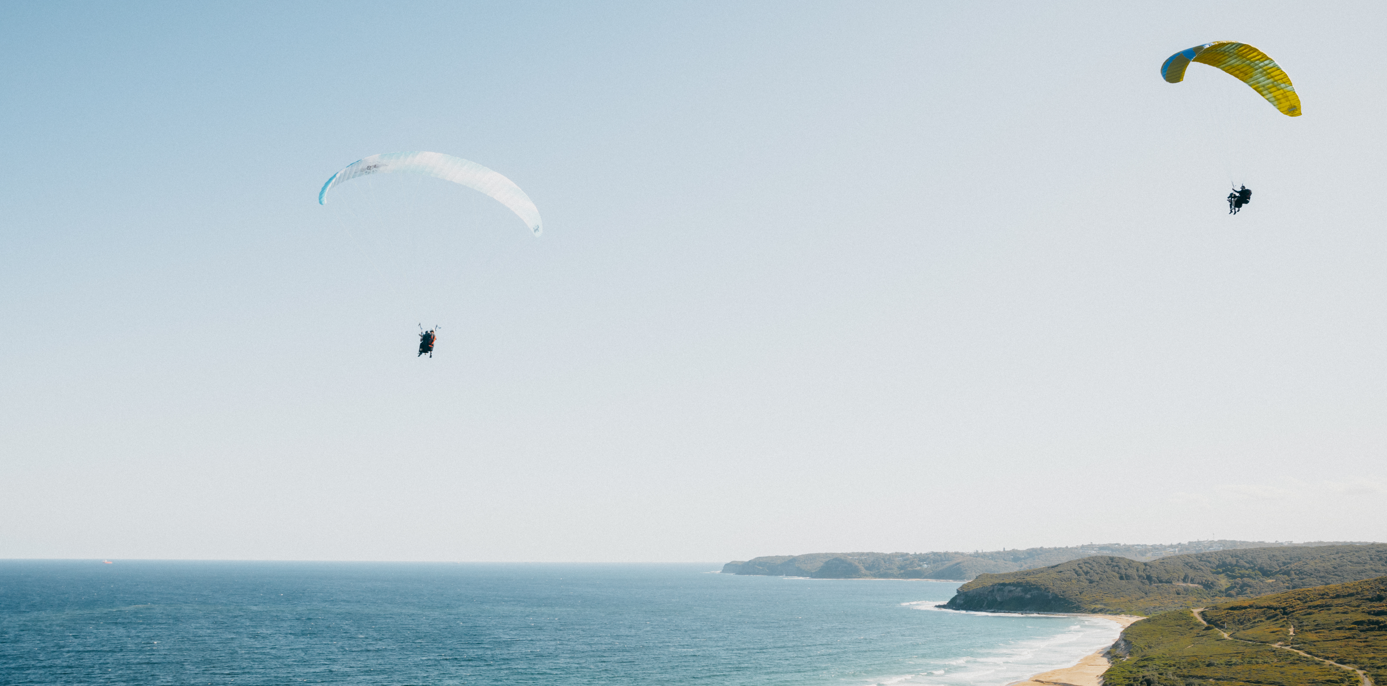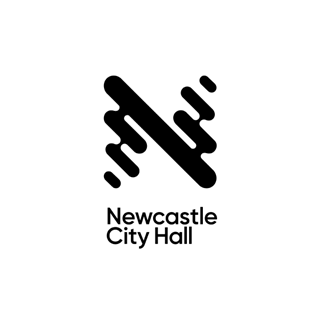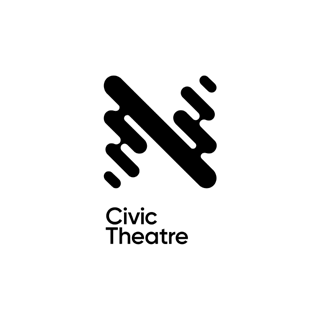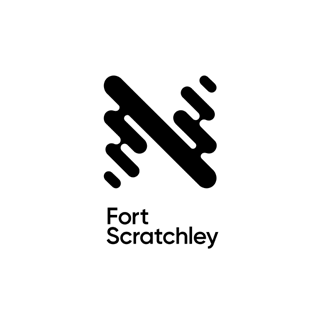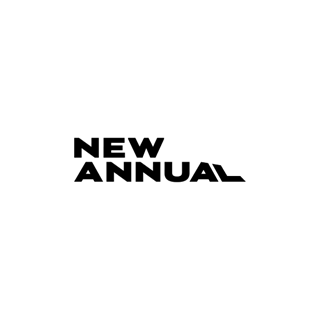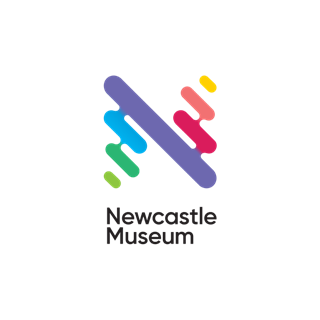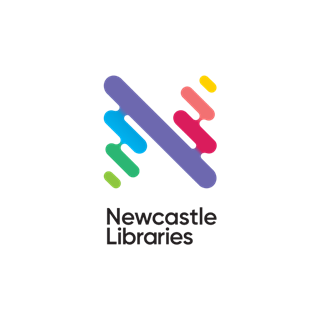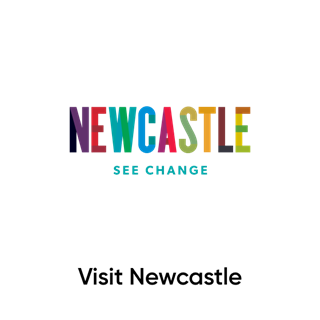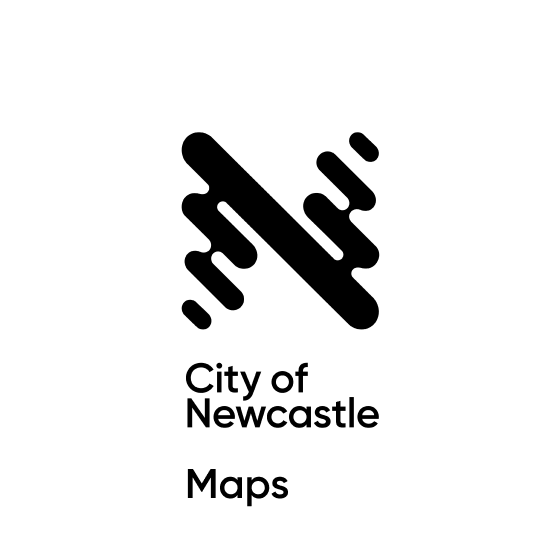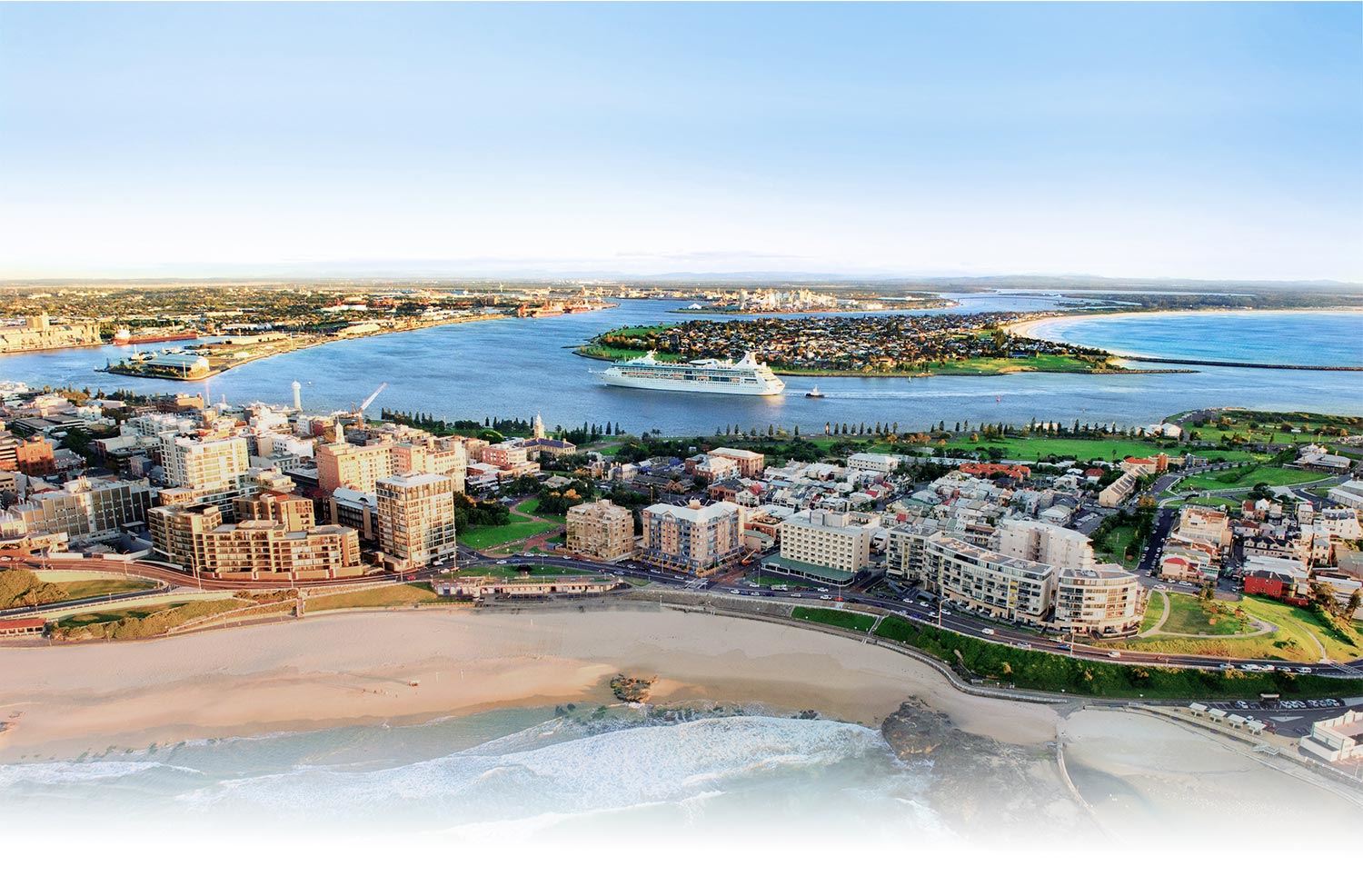
Newcastle 2040 online version
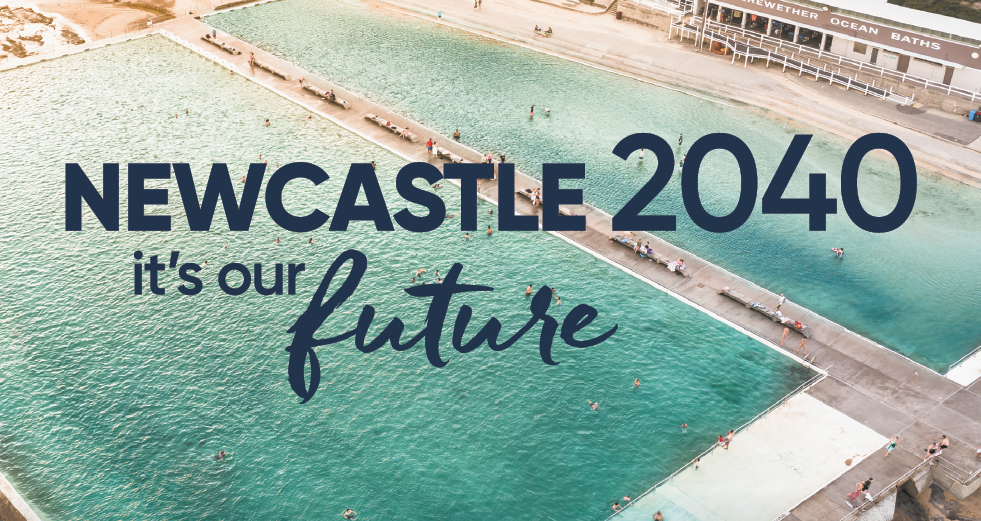
Community Strategic Plan Revised 2024/25
Enquiries
For information about this document contactCity of Newcastle, PO Box 489, Newcastle NSW 2300
newcastle.nsw.gov.au © 2024 City of Newcastle
This revised 2024/2025 Community Strategic Plan – Newcastle 2040 was endorsed by Council on 15 April 2025
Contents
Welcome
Acknowledgement of Country
“Niirun Yalawa Awabakal dha Worimi burrai”.We all sit on Awabakal and Worimi land. The City of Newcastle (CN) Acknowledges its Local Government Area (LGA) sits within the Country of the Awabakal and the Worimi peoples. We Acknowledge that Country for Aboriginal peoples is an interconnected set of ancient relationships. The City of Newcastle Acknowledges the custodianship of the Awabakal and Worimi peoples and the care and stewardship they have performed in this place since time immemorial. “Wunyibu wunyibu warra wunyibu wunyibu gkuuba Aboriginal burrai”.
Always was, always will be Aboriginal land. In recognition of Aboriginal cultural heritage, eight Newcastle landmarks are officially dual-named with their traditional Aboriginal names. These are based on Aboriginal references to the landmarks documented in maps, sketches and geological descriptions dating back as early as 1798:
- Nobbys Head – Whibayganba
- Flagstaff Hill – Tahlbihn
- Pirate Point – Burrabihngarn
- Port Hunter – Yohaaba
- Hunter River (South Channel) – Coquun
- Shepherds Hill – Khanterin
- Ironbark Creek – Toohrnbing
- Hexham Swamp – Burraghihnbihng

Lord Mayor Message
Dr Ross Kerridge
 It’s fair to say that we believe Newcastle is the best place to live, work and play anywhere in the world. But while there’s plenty to love about our incredible city today, we always need to keep our focus on tomorrow, and on how we can continue to enjoy this place we love – long into the future. That’s why we’ve created Newcastle 2040: our shared vision for achieving a liveable, sustainable, inclusive global city. In 2021, Newcastle 2040 was developed in consultation with you, the community, over a period of 12 months. It represents the collaboration of thousands of interactions, including face-to-face conversations, workshops, surveys, online feedback, advisory committees and stakeholder engagement. Through this community consultation, we have developed four key themes that reflect the aspirations and values of the Newcastle community:
It’s fair to say that we believe Newcastle is the best place to live, work and play anywhere in the world. But while there’s plenty to love about our incredible city today, we always need to keep our focus on tomorrow, and on how we can continue to enjoy this place we love – long into the future. That’s why we’ve created Newcastle 2040: our shared vision for achieving a liveable, sustainable, inclusive global city. In 2021, Newcastle 2040 was developed in consultation with you, the community, over a period of 12 months. It represents the collaboration of thousands of interactions, including face-to-face conversations, workshops, surveys, online feedback, advisory committees and stakeholder engagement. Through this community consultation, we have developed four key themes that reflect the aspirations and values of the Newcastle community: - Liveable Newcastle
- Sustainable Newcastle
- Creative Newcastle
- Achieving Together
Lord Mayor of Newcastle
CEO Message
Jeremy Bath
 The importance of Newcastle 2040 for the future of our city can’t be overstated. Representing the highest level of planning we undertake at local government level, it’s a shared community vision that will inform our projects and programs for the next 10 years and beyond. Creating a vision for our city is one thing – but what’s just as important is having a plan to make sure we get things done. As custodians of Newcastle 2040, we’ll implement an integrated approach to planning and reporting, enabling the community and our partners in government and business to track our progress and see our achievements, year-to-year, for each of the key themes. City of Newcastle alone cannot deliver the priorities and objectives of Newcastle 2040. Shared decision-making and collaborative partnerships with government agencies, non-government organisations, business and, of course, our local community, will be critical to our collective success as a region. Every one of us has a role to play in realising our shared future. As we move towards achieving our goals for Newcastle 2040, we will work closely with you, our community and partners, on the actions, projects and services we need to deliver to bring this plan to life. Together, we can create a liveable, sustainable, inclusive global city. Jeremy Bath
The importance of Newcastle 2040 for the future of our city can’t be overstated. Representing the highest level of planning we undertake at local government level, it’s a shared community vision that will inform our projects and programs for the next 10 years and beyond. Creating a vision for our city is one thing – but what’s just as important is having a plan to make sure we get things done. As custodians of Newcastle 2040, we’ll implement an integrated approach to planning and reporting, enabling the community and our partners in government and business to track our progress and see our achievements, year-to-year, for each of the key themes. City of Newcastle alone cannot deliver the priorities and objectives of Newcastle 2040. Shared decision-making and collaborative partnerships with government agencies, non-government organisations, business and, of course, our local community, will be critical to our collective success as a region. Every one of us has a role to play in realising our shared future. As we move towards achieving our goals for Newcastle 2040, we will work closely with you, our community and partners, on the actions, projects and services we need to deliver to bring this plan to life. Together, we can create a liveable, sustainable, inclusive global city. Jeremy BathChief Executive Officer
Our vision
Newcastle is a liveable,
sustainable, inclusive global city 
Planning for our future
Newcastle 2040 is a shared community vision, developed as a guide to inform policies and actions throughout the city for the next 10+ years. For all of us who live, work, play and invest in Newcastle, this vision sets the direction for how we want our city to grow. With direct input from a wide cross-section of the community, it represents what we value in our city and what we want to prioritise. We will be a better city in 2040 thanks to the input and insight of the community members who contributed their time to this planning process. In 2040, Newcastle will be a liveable, sustainable, inclusive global city. We will celebrate our unique city and protect our natural assets. We will optimise opportunities and build resilience in the face of future challenges. We will champion inclusion so that everyone is valued, and we will encourage innovation and creativity. As we make our way towards 2040, we will work together to achieve our vision by building trust and collaborative relationships. To guide us forward, we will focus on four themes that emerged from our shared planning process:- Liveable
- Sustainable
- Creative
- Achieving Together
Quadruple bottom line
The four key areas of quadruple bottom line reporting; social, environmental, economic, and governance are embedded within the themes, priorities, and objectives of Newcastle 2040, ensuring long-term, sustainable outcomes that effectively address the diverse needs and aspirations of the community.Turning our plan into action
Delivering Newcastle 2040 and our informing strategies, such as our Newcastle Environment Strategy and our Waste Strategy, turn our vision into action. For more information, visit our website www.newcastle.nsw.gov.au.
Our plan on a page

Newcastle is a liveable, sustainable, inclusive global city
Our commitments
Resilience
Supporting local
Aboriginal and Torres Strait Islander peoples and culture
Our planet
Innovation
Social justice and inclusion
1. Liveable
Social Economic
1.1 Enriched neighborhoods and places
1.1.1 Create and maintain vibrant, inclusive and well-designed public spaces 1.1.2 Promote sustainable and accessible urban design 1.1.3 Protect and celebrate Newcastle’s heritage 1.1.4 Increase access to affordable housing 1.1.5 Enhance and protect public safety1.2 Safe, active and linked movement across the city
1.2.1 Develop accessible, connected cycleways and pedestrian networks 1.2.2 Maintain safe and efficient road networks 1.2.3 Implement effective parking strategies 1.2.4 Strengthen active and public transport connections and services2. Sustainable
Environment
2.1 Action on climate change
2.1.1 Support the transition to net zero emissions 2.1.2 Assess and share climate risks 2.1.3 Support climate change adaption by building resilient communities and urban and natural areas2.2 Nature-based solutions
2.2.1 Protect and regenerate natural systems 2.2.2 Protect and expand the urban forest 2.2.3 Support the transition to a water-sensitive city2.3 Circular economy
2.3.1 Design out waste and promote resource recovery and reuse 2.3.2 Support local supply chains and sustainable procurement3. Creative
Social economic
3.1 Vibrant and creative city
3.1.1 Plan, support and deliver vibrant events and programs 3.1.2 Position Newcastle as a premier destination 3.1.3 Foster cultural vibrancy and creativity3.2 Opportunities in jobs, learning and innovation
3.2.1 Provide inclusive learning and employment opportunities 3.2.2 Grow our local skills base3.3 Connected and fair communities
3.3.1 Support strong social and cultural connections 3.3.2 Celebrate diversity and champion inclusion 3.3.3 Promote and support active and healthy communities3.4 City-shaping partnerships
3.4.1 Optimise city opportunities 3.4.2 Advocate and collaborate across government, industry, business and community4. Achieving Together
Governance
4.1 Inclusive and integrated planning
4.1.1 Ensure financial sustainability 4.1.2 Strengthen our integrated planning and reporting 4.1.3 Develop a skilled and engaged workforce4.2 Trust and transparency
4.2.1 Foster genuine community engagement 4.2.2 Share information and celebrate success 4.2.3 Deliver a trusted customer experience4.3 Collaborative and innovative approach
4.3.1 Build a collaborative organisational culture 4.3.2 Encourage innovation and continuous improvementOur commitments
Some things are non-negotiable. They go above and beyond strategic directions, themes and priorities and are central to everything we do. These are our commitments. CN’s commitments underpin Newcastle 2040 and inform the actions we take, the choices we make, the behaviours we demonstrate and the interactions we have. CN is committed to:- Aboriginal and Torres Strait Islander peoples and culture
- Our planet
- Resilience
- Supporting local
- Innovation
- Social justice and inclusion

Aboriginal and Torres Strait Islander peoples and culture
CN recognises Aboriginal peoples as the first people of Australia and the Traditional Custodians of the land. Aboriginal people have lived here for over 60,000 years and are recognised as the oldest continuous culture in the world. We understand and appreciate that Aboriginal people have diverse, unique languages and spiritual beliefs and an enduring reciprocal relationship with the land. CN acknowledges and regrets the acts of dispossession and settlement, the discriminatory policies, and the cumulative acts of colonial and contemporary governments since the commencement of colonisation, all of which have led to a legacy of economic and social disadvantage for many Aboriginal and Torres Strait Islander people. CN commits to developing a genuine understanding of our shared history and its lasting impact on Aboriginal and Torres Strait Islander peoples so that we do not repeat past injustices. We embrace moving forward together and building a relationship based on mutual respect that acknowledges, values and celebrates Aboriginal and Torres Strait Islander peoples, their spirits, their spiritual beliefs and their culture. CN commits to delivering economic and social outcomes for Aboriginal and Torres Strait Islander peoples.
Our planet
Our global challenge is to safeguard our environment to meet the needs of present generations while not compromising the ability of future generations to also meet their needs, and to respond to the climate and biodiversity emergencies. CN commits to enhancing our natural environment by minimising our overall impact and protecting our natural assets. CN commits to measuring and understanding the environmental impact of our operations to develop ways to mitigate these effects while balancing the needs of our community.Resilience
At CN, we are committed to fostering resilience in every aspect of our operations and community. We recognise that resilience is a shared responsibility, not only within our organisation but across the broader community. Our focus spans multiple key areas: organisational resilience, which ensures that we remain adaptable and responsive; community resilience, empowering individuals and groups to thrive in the face of challenges; and infrastructure resilience, ensuring that our physical assets withstand and recover from disruptions. We also prioritise resilience in our services, ensuring that vital programs and initiatives continue to meet the evolving needs of our community. Through proactive land use planning and robust emergency management, we strengthen our capacity to anticipate, respond to, and recover from unforeseen events. Together, we build a stronger, more resilient future for all.Supporting local
Local businesses are the lifeblood of our community.Supporting local businesses creates jobs, reduces carbon footprints, injects money into the local economy and promotes a sense of community. CN preferences local businesses, where appropriate,
when procuring goods and services.
Innovation
Innovation is a process of empathy and invention, of collaborative problem-solving and actively shaping the future. A community that harnesses innovation will have the tools to confidently adapt to change. CN commits to embracing creativity and innovation in our organisation and in our community. CN commits to applying innovation to improve our community’s experience and equity, and to enhance the sustainability, amenity and liveability of our city.Social justice and inclusion
CN believes in access, equity and justice for all. We support the rights of every person to participate fully in the social, economic, civic and cultural life of our community. Social justice means that all people have equal access to wealth, health, wellbeing, justice and opportunity. The four principles of social justice are:- Equity:
Resources are allocated according to need with the aim of achieving more equal outcomes, particularly for those with greater needs or barriers to access. - Access:
People have fair access to services, resources and opportunities to improve their quality of life. - Participation:
People can fully participate in community life and genuinely influence decisions that affect their lives. - Rights:
Human rights are universal – everyone has the right to be treated with respect, equality and dignity. Human rights are the basic freedoms and protections that people are entitled to, including economic, social, cultural and political rights.
About Newcastle 2040
From vision to action
What is Integrated Planning and Reporting (IPR)?
IPR requirements for local government were introduced in 2009. They arose from the notion that all council planning should originate from a sound understanding of the community’s expectations around priorities and service levels. The IPR framework comprises a series of interrelated documents that provide a consistent, integrated approach to community planning across all NSW local councils, while also ensuring alignment with regional and state priorities.Why is IPR important?
CN operates in an increasingly complex environment, with responsibilities under more than 50 different pieces of legislation and direct relationships with over 20 NSW and Commonwealth Government agencies. The IPR framework allows CN to navigate these complexities in a meaningful and purposeful way, and to:- Integrate community priorities into strategies and plans
- Support our community and stakeholders to play an active role in shaping the future of their community
- Articulate the community’s vision and priorities
- Assign resourcing to support delivery of our vision and priorities, while also balancing aspirations with affordability
- Maintain accountability and transparency through regular monitoring and reporting.

Newcastle 2040
Our community’s vision
Newcastle 2040 is the highest-level plan that CN prepares. Its purpose is to identify the community’s main priorities and aspirations for the future and to plan strategies for achieving these goals. Newcastle 2040 guides all other CN strategies and plans and must be developed with and on behalf of the community. To formulate Newcastle 2040, we received approximately 5,000 pieces of feedback from the community between 2019-2021. Legislation dictates that we review and consider updating the Community Strategic Plan - Newcastle 2040 in the year following an ordinary election of Council. This version of Newcastle 2040 reflects further engagement during 2024/2025 to ensure that we have outlined our key directions and actions successfully, and that we are on track to achieve our goals for a liveable, sustainable, inclusive global city.Community Engagement Strategy
Our plan to engage with our community
The Community Engagement Strategy is a framework for how we will engage with our community to support the development of our plans, policies, programs and key activities. The framework enhances CN’s capacity to make well-informed decisions that reflect community needs and priorities to help shape the future of our city.Delivering Newcastle 2040
Our commitment of delivery to the community
Delivering Newcastle 2040 is made up of the Delivery Program and Operational Plan Delivery Program is a statement of commitmentto the community from our newly elected Council.
It translates the community’s vision and priorities into clear actions, and is the primary reference point for all activities undertaken by Council during its term of office. It allows Council to determine what is achievable over the next four years, what the priorities are, and how programs will be scheduled. Operational Plan (including annual budget) is CN’s action plan for achieving the community priorities outlined in Newcastle 2040 and the Delivery Program. An Operational Plan is prepared each year and adopted by Council. It identifies the projects, programs and actions that CN will deliver to achieve the commitments in the Delivery Program.
Resourcing Newcastle 2040
Our resources to deliver Newcastle 2040
Resourcing Newcastle 2040 clearly articulates how CN will implement and resource our vision. This consists of three components:- Long-Term Financial Plan
- Workforce Management Plan
- Asset Management Plan.
Reporting on Newcastle 2040
Our accountability to the community
Evaluation of the quality and effectiveness ofour services is an important accountability mechanism between CN, councillors and the community. The IPR framework requires CN to report in the following ways:
- Quarterly Financial Budget Review Statements
- Six-Monthly Performance Progress Reports
- Annual Report
- State of Our City Report.
Monitoring Newcastle 2040
Our progress towards our vision
We use community and service indicators to track progress and ensure we are moving towards our vision. Community indicators show trends over time, helping us see if changes are heading in the right direction. Service indicators focus on the impact of CN’s services on the city and community.

Our role
As Newcastle continues to grow, CN, our stakeholders and our community need to work together to invest in our individual and collective wellbeing. While CN has a custodial role in initiating, preparing and delivering Newcastle 2040 on behalf of the community, it is not solely responsible for its implementation. Many of the issues and concerns facing Newcastle are complex and beyond the direct control and influence of CN, such as public transport, health, education, housing, planning and employment. To deliver our vision, CN works with various stakeholders and partners, including other levels of government and their affiliated agencies, local businesses and industry, educational institutions, community groups, and other service providers. Depending on the activity being undertaken, CN’s role is to Deliver, Partner and/or Advocate. By building partnerships, taking a strong leadership role and delivering on its own commitments, CN plays an important role in shaping our city and making Newcastle a place for everyone.
 Deliver (Control)
Deliver (Control)
CN delivers a wide range of programs and services including waste collection, libraries, childcare, maintenance of local roads and public spaces, recreation facilities and programs, community support, special events and regulatory functions.  Partner (Influence)
Partner (Influence)
There are areas in which CN has partial or shared responsibility or influence. CN builds strategic partnerships with federal and state government agencies, the private sector, and a range of other stakeholders whose work will contribute to delivering our long-term priorities.  Advocate (Concern)
Advocate (Concern)
A wide range of issues important to the community sit outside CN’s control. CN gives a voice to the needs and aspirations of the community by advocating for changes in policy and action at relevant levels of government and industry. 
Our stakeholders
| Why our stakeholders are important | Why we are important to our stakeholders | CN engages with this group via | |
|---|---|---|---|
| Businesses | Build capacity, create vibrance and drive our city’s economy | Provide opportunities for business and promote activities to enhance businesses | Focus groups and workshops, publications, website, social media, annual report and surveys |
| Customers | Provide us with feedback and utilise our services and products | Provide products and services of good value and quality | Customer service centre, customer experience and satisfaction measures, follow-ups, website, publications, fact sheets |
| Community groups and volunteers | Build trust and connections with local communities through these services | Provide support and partnerships | Focus groups, committees and training |
| Employees | Central to the success of our organisation by providing valued knowledge, skills and labour | Provide a fair, engaging and enriched work experience with career development and flexible work arrangements | One Place (intranet), briefings, meetings, surveys, emails, NovoNews (newsletter), interviews and exit interviews |
| Government | Provide funding opportunities, guidance through regulation and legislation, services, planning direction and networks | Provide local strategies, partnerships and networks | Formal meetings, briefings and networking meetings, correspondence and events, legislative reporting and 1:1 meetings |
| Media | Build and protect reputation and raise awareness of events, services and facilities | Share information about CN plans, programs, events and key activities | Media releases, briefings, interviews and social media |
| Partners | Provide shared knowledge, networks, cultural experiences and economies of scale | Provide advocacy, leadership, cultural vibrancy, and resources in line with policy and legislation | Contract management, account management relationships, networking meetings and regular engagement through site visits |
| Ratepayers | Provide funding for local services and infrastructure; provide guidance, values, engagement and feedback | Generate sustainable growth and returns to the community | Rates notices, community meetings, surveys, City News and other publications, website and annual report |
| Residents | Provide guidance, values, engagement and feedback | Provide civic leadership representation, services and facilities | Public meetings, City News and other publications, website, social media, annual report, surveys, public exhibitions, community consultations and feedback sessions |
| Suppliers | Provide products and services of good value and quality | Provide fair access to business opportunities in line with policy and legislation | Contract management and account management relationships |
| Visitors | Provide economic benefits by visiting, shopping and studying; generate employment opportunities and financial viability | Provide products, services and facilities | Website, social media and other published information, and the Visitor Information Centre |
Our services
CN is committed to delivering high-quality services that meet the needs and expectations of our community. To ensure we are aligned with community priorities, we conduct annual research to assess satisfaction levels and gather insights. Through our Service Optimisation program, we will continue engaging with the community to refine service expectations. Our Resourcing Strategies support these efforts by ensuring our people, finances, and assets align with service delivery needs, through clear objectives and strategic actions. Below is a list of the high-level services CN provides to the community.  Planning & Environment
Planning & Environment
- Environmental Strategy
- Climate Change and Sustainability
- Environmental Assets
- City Greening
- Blackbutt, Natural Areas and Invasive Species
- City Wide Development Assessment
- City Significant Strategic Planning
- Compliance Operations
- Environmental Health
- Traffic Engineering and Transport Planning
 Corporate Services
Corporate Services
- Corporate Finance
- Contracts and Procurement
- Property Services
- Rates and Debt Management
- Corporate Planning and Performance
- Information Technology
- Governance and Councillor Services
- Legal Services
- Records and Information Management
- Enterprise Risk and Audit
- Customer Service Centre
- Business and Customer Improvement
- Workforce Development
- Safety and Wellbeing
- Talent Diversity and Inclusion
 Creative & Community
Creative & Community
- City Events
- Marketing and Tourism
- Economic Development and capacity building
- Visitor Information Centre
- Media and Stakeholder Relations
- Museum and Libraries
- Children’s Education Services
- Fort Scratchley Historic Site
- Art Gallery
- Civic Theatre including Civic Playhouse
- Civic Venues including City Hall and Fort Scratchley Function Centre
- Community Planning and Development
- Social Planning
- Community Halls and Cemeteries
- Aquatic Services - Inland Pools and Professional Lifeguards
- Sport and Recreation - Planning, Projects and Maintenance
- Parks, Playgrounds, Sporting Fields and Dog Parks
 City Infrastructure
City Infrastructure
- Asset Management
- Building Trade Services
- Facilities Management and City Presentation
- Fleet and Plant Management
- Project Management
- Civil Construction
- Road Maintenance
- Depot Management
 Waste Management
Waste Management
- Landfill Management and Resource Recovery
- Waste Collection and Service Delivery
- Community Education Programs
- Waste Infrastructure and Assets
Our Newcastle
Where are we now?
Our city, our people
How Newcastle lives, works, plays and invests
Our city, our people
Newcastle is a proud community that has been shaped by our heritage.We have survived earthquakes, superstorms and the closure
of major industries, and we continue to grow and change. The Awabakal and Worimi peoples are acknowledged as the Traditional Custodians of the land and waters of Newcastle. The tangible and intangible cultural heritage of the Awabakal and Worimi peoples continues to enrich and inform contemporary Aboriginal and non-Aboriginal communities of Newcastle and the Hunter Region. European settlement introduced a range of activities, from farming to coal mining and industry. While the industrial sector continues to play an important employment role, a substantial and growing portion of our economy is now based around the service sector. We are home to artists, galleries, museums, theatres, creative enterprises, arts organisations, cultural education providers, cultural collections, and a community that embraces cultural expression. We have a diverse natural environment, from coastal headlands and beaches to wetlands, mangrove forests, steep ridges and rainforest gullies. Our suburbs are also diverse – from the heritage-lined streets of Newcastle East to the leafy homes of our middle suburbs such as Lambton and Kotara, and more recent greenfield estates at Fletcher and Minmi.
Our place in the region
Newcastle is located about 160 km north of Sydney. It is Australia’s seventh-largest city and is the centre of the Greater Newcastle Region, the largest regional centre in NSW. Newcastle is the economic hub of the Hunter Region, with an international profile as a major port city and a gateway to the world for the Hunter’s rich resources. Newcastle is home to the University of Newcastle (UoN); the John Hunter Hospital, which is the tertiary referral hospital for Northern NSW; and a number of world-class research organisations, including the Commonwealth Scientific and Industrial Research Organisation (CSIRO) Energy Centre and National Solar Energy Centre and the Hunter Medical Research Institute. Newcastle is the cultural heart of the Hunter Region, supporting Newcastle Art Gallery, Newcastle Museum, and the Civic Theatre and Playhouse, and hosting a diverse calendar of cultural events. The Hunter Regional Plan 2041, the Greater Newcastle Metropolitan Plan 2036 and the Hunter Joint Organisational Strategic Plan 2032 are the key regional development planning documents that support Newcastle. The Greater Newcastle Metropolitan Plan states that:‘Metropolitan cities succeed and perform best when all tiers of government collaborate and work together with business, industry and community to deliver a shared vision for their city.’
Our population
- Newcastle population 2023 174,294
- Population by 2046 205,445
- Greater Newcastle population 2021 604,115
- Population by 2041 773,825
- Estimated annual population growth rate 0.77%

Planning NSW Population
Projections, forecast.id
People
| Age group | Population |
|---|---|
| 0 to 4 years | 5.2% |
| 5 to 11 years | 7.8% |
| 12 to 17 years | 6.3% |
| 18 to 24 years | 11.2% |
| 25 to 34 years | 16.0% |
| 35 to 49 years | 19.1% |
| 50 to 59 years | 11.9% |
| 60 to 69 years | 10.4% |
| 70 to 84 years | 9.5% |
| 85 years & over | 2.6% |
Median age
Newcastle 37 NSW 39Aboriginal and Torres Strait Islander population
Newcastle 4.4% NSW 3.4%Born overseas
Newcastle 15% NSW 29%Speak a language other than English
Newcastle 11% NSW 27% 134 different languages spoken at home – most widely spoken includes Mandarin, Macedonian, Italian, Greek and Arabic. Languages spoken with greatest need for translation included Arabic, Mandarin, Swahili, Persian/Dari and Tibetan.Homeless categories

| Category | Population |
|---|---|
| ‘Severely’ crowded dwellings | 143 |
| Improvised dwellings, tents, or sleeping out | 24 |
| Supported accommodation for the homeless | 232 |
| Temporarily with other households | 91 |
| Boarding houses | 499 |
| Other temporary lodgings | 92 |
| Total | 1073 |
Housing stress
Of the 20,700 households in private rentals in Newcastle 4,935 (23.8%) were in rental stress in 2021 compared to 28.1% for Regional NSW. Of the 20,894 households with a mortgage in Newcastle 1,303 (6.2%) were in mortgage stress in 2021 (Regional NSW average 8.4%).Our city Newcastle

Live

| House make-up | Percentage |
|---|---|
| Lone person households | 28% |
| Couples with children | 25% |
| Couples without children | 25% |
| One-parent families | 11% |
| Group households | 7% |
30.3% have a mortgage; 34.5% are renting 81km of watercourses 91 bushland parcels totalling 5.1 million m2 113,048 street and park trees 42 inland cliffs totalling 3.6km 5.7km bushland tracks and trails 14km coastline 65 wetlands
Work

| Income by households (per week) | Percentage |
|---|---|
| Low income <$886 | 25.9% |
| Lower to middle income $887 to $1,824 | 25.7% |
| Middle to upper income $1,825 to $3,134 | 25.8% |
| High income earners $3,135+ | 22.6% |
Top 3 industry sectors by employment
142,317 jobs in Newcastle
Play
Invest
Source for community and economic statistics:
https://newcastle.nsw.gov.au/living/our-city/who-we-are
https://profile.id.com.au/newcastle.
Our shared future
Our approach
Opportunities and challenges
From local to global
Sustainable Development Goals (SDGs)
Our approach
We all have an important role to play in Newcastle 2040. Together, we have developed an ambitious long-term vision that sets out our priorities for the future. Our community is passionate about Newcastle, and they love where they live. This willingness to engage has helped shape our city’s future.
Collaboration and listening
Newcastle 2040 has been developed through an extensive engagement process undertaken throughout 2019–2021 for the initial development and then again in 2024-2025 for a review. The focus of this process was to listen to the needs and aspirations of our community to determine our future priorities based on our strengths, challenges and opportunities. Our engagement began at local community events and was followed by workshops, stakeholder meetings, surveys, online discussions and local neighbourhood conversations. We wanted to make sure we heard from all of Newcastle – young and old, from Bar Beach to Beresfield and everywhere in between.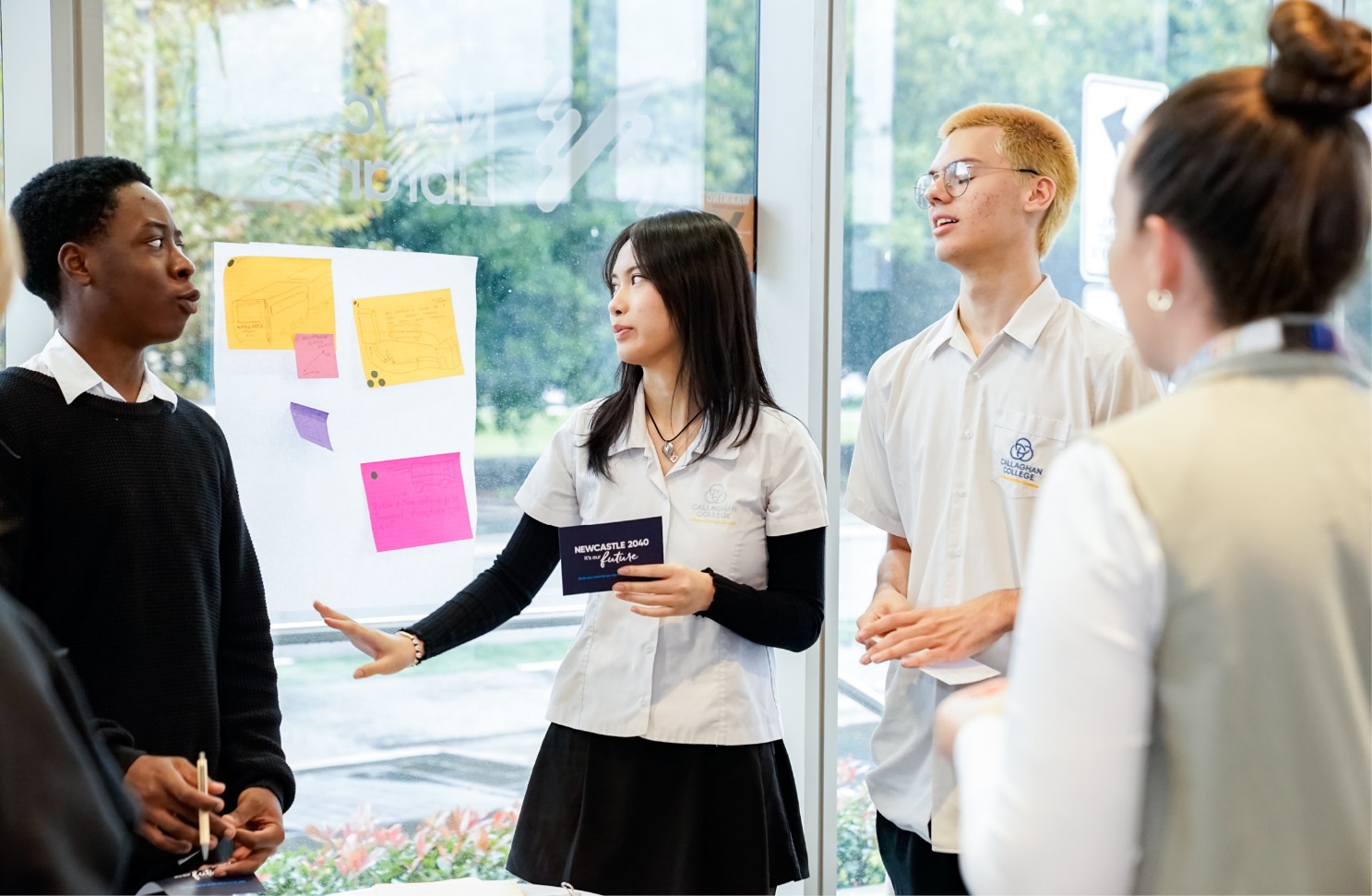
Where we’ve been
2019-2021 Engagement
- City Leaders Talk
- Councillor Strategic Workshop
- Plattsburg Public School
- Newcastle TAFE
- IQ Innovation Event
- Newcastle Show
- Library Summer Stories event LGBTQIA+
- Count Us In – Launch
- Count Us In – Multicultural pop-up library
- Guide Dogs Newcastle
- Seniors’ Week
- Jesmond Harmony Day
- Jesmond Shopping Centre
- Blackbutt Indigenous Youth Workshop
- Youth Week – Wallsend Skate Park
- Wallsend Shopping Centre
- Marketown Shopping Centre
- Beresfield Local Centre
- Dixon Park
- Aboriginal and Torres Strait Islander Network Event
- Waratah High School Leaders
- Future Entrepreneur Workshop
- New Local Event – Workshop
- CN Strategic Advisory Committees
- CSP Survey February 2020
- Quarterly Community Survey Dec 2020 & May 2021
- Social Pinpoint Survey
- Community Online Workshop Nov 2021
- Internal New Local Event - Workshop
- Internal City Administration Centre, Works Depot and Library Staff
- Internal Leadership Team Presentation
- Internal Newcastle 2040 Champions Sessions
2024-2025 Engagement
- CN's Have Your Say webpage (including survey)
- Youtube
- Newsletter distribution
- CN Strategic Advisory Committees
- Olive Tree Markets
- Newcastle Farmers Markets
- Blackbutt Reserve
- Wallsend Park
- Youth Week Open Day
- Hunter Disability Expo
- Multicultural Services Expo
- Rising from the Embers Festival
- Internal staff survey
- Love Where You Live, Work, Play Competition
- Paid advertising campaigns with HunterHunter, Newcastle Weekly and Newy with Kids
- Footpath decals across Newcastle
Community involvement
Extensive review
2019-2021
Extensive review conducted over an 18 month period to inform our new Community Strategic Plan - Newcastle 2040
- Have Your Say webpage visits 7,757
- Reach across Social Media 103,051
- Reach via e-newsletters 15,000+
- Survey responses 2,450+
- Online Vision Wall Ideas 400
- Pieces of feedback received 5,000
Minor review
2024-2025
Minor review conducted over a two month period to check-in with the community to inform our revised Community Strategic Plan - Newcastle 2040
- Have Your Say webpage visits 3,442
- Reach across Social Media 199,627
- Reach via e-newsletters 2,667
- Survey responses 342
- Online Vision Wall Ideas 55
- Pieces of feedback received 800
Public exhibition
2024-2025
Legislated Public Exhibition period from 12 December 2024 to 30 January 2025 for the community to comment on the revised Community Strategic Plan - Newcastle 2040
- Have Your Say webpage visits 11,275*
- Social Media impressions/touchpoints 523,937*
- Reach via e-newsletters 3,502
- Partner campaign touch points 202,880
- Online form responses 139
- Competition entries 56
Notes:
*change in metrics
Webpage views = total number of times a specific webpage has been loaded or reloaded
Webpage visits = the number of end-user sessions
Social media reach = estimated total number of unique users who have seen the content
Social media impressions = total number of times content has been displayed. May include multiple views by the same user.
Where do we want to be in ten year’s time?
The Newcastle community is clearly passionate about their city and want to work towards our vision of a liveable, sustainable, and inclusive global city. During the review, an impressive 84% of survey respondents indicated that our vision aligns with their hopes for the future. Key topics identified throughout the review include:
Liveable:
- Adequate and accessible options for moving around our city
- Active transport, public transport and parking
- Affordable housing
- Well-designed public spaces
- Investment in roads and social infrastructure
- Public safety and inclusive communities
Sustainable:
- Care for our environment
- Manage resources and waste
- Utilise sustainable planning and renewable energy sources
- More trees and access to green spaces
- Action on climate change
Creative:
- Support arts and cultural opportunities
- Celebrate our diversity
- Enable tourism
- Activate our city with events and entertainment
- Community focus
- Accessibility, diversity and inclusion
Achieving Together:
- Continue to provide genuine opportunities for consultation
- Be transparent with information
- Demonstrate accountability to our community
- Advocacy, support and partnerships
Love Where you Live, Work, Play Competition
To help celebrate the public exhibition milestone, we launched the Love Where you Live, Work, Play Competition encouraging people to share what they love about the people and places in their local communities. Thank you to everyone who entered the competition - check out some of the entries!  The Connected Novocastrian - Shaylie Pryer
The Connected Novocastrian - Shaylie Pryer
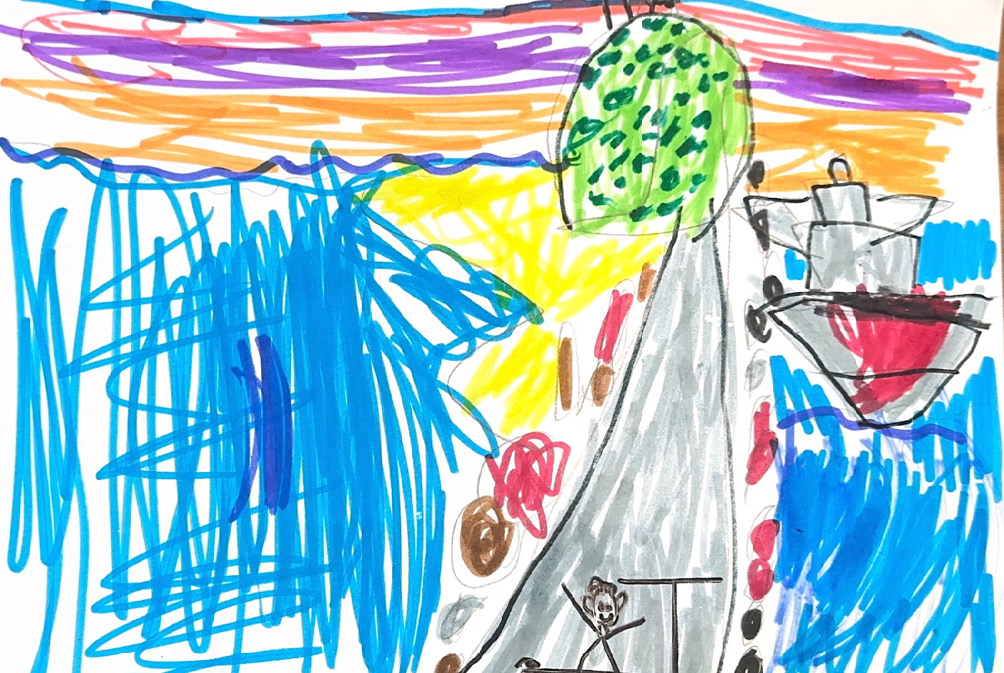 Scooting at Nobby’s break wall watching the ships come in - Fletcher Herron, aged 5 years
Scooting at Nobby’s break wall watching the ships come in - Fletcher Herron, aged 5 years 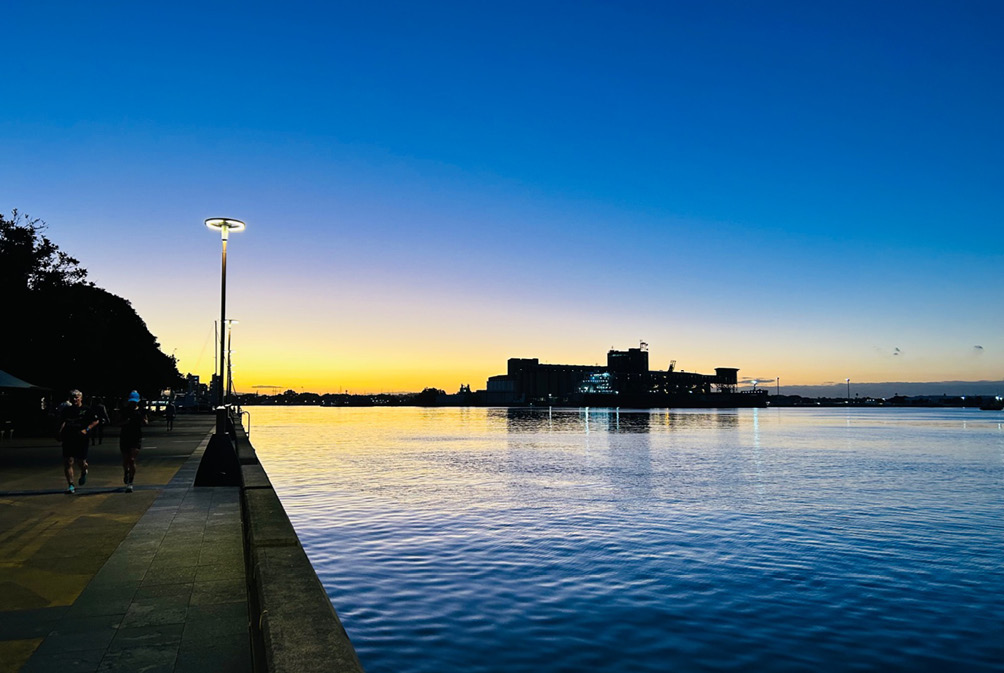 Sunset on Newy Harbour - Linh Nguyen
Sunset on Newy Harbour - Linh Nguyen  Today Starts Here - Jeremy Whyte
Today Starts Here - Jeremy Whyte  Newy - Michelle Pietroboni
Newy - Michelle Pietroboni  Merewether Baths - Claire Green
Merewether Baths - Claire Green  Kau-ma park Fletcher – Leisa
Kau-ma park Fletcher – Leisa 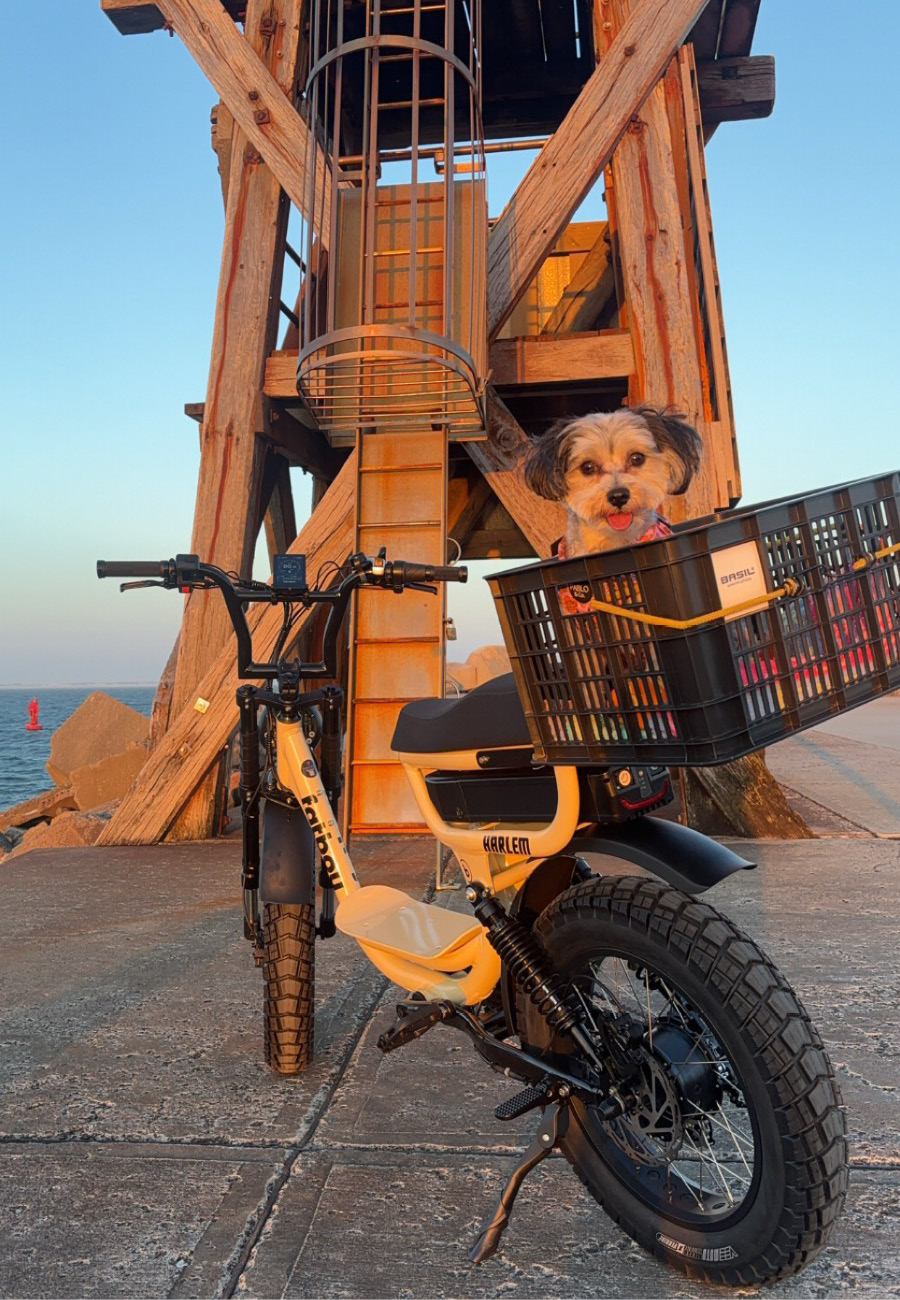 Lola living her best life in Newcastle - Zoë-Mae Croese
Lola living her best life in Newcastle - Zoë-Mae Croese Opportunities and challenges
We acknowledge there are challenges facing Newcastle in our journey to becoming a liveable, sustainable, inclusive global city. CSIRO’s global megatrend research has identified significant shifts in environmental, economic and social conditions that will play out over the coming decades. Acknowledgement of these challenges and identification of how they can be mitigated, or even turned into opportunities, will be key to delivering Newcastle’s vision.
Affordable housing
Forecasts show that Newcastle’s population is set to grow to 205,445 by 2046 stimulating demand for new dwellings. A mix of affordable and sustainable future housing is imperative to meet the diverse needs of our growing community. Unfortunately, due to a significant shortfall in the supply of longer-term social (and affordable) housing, housing unaffordability (‘housing stress’) and homelessness for our vulnerable families and individuals is increasing. Newcastle’s housing affordability problem for lower-income households has become acute and its impact is being felt strongly.Broadmeadow Place Strategy
CN developed the Broadmeadow Place Strategy in collaboration with the Department of Planning, Housing and Infrastructure in response to the NSW Government’s Rezoning Pathways Program. This Program identified Broadmeadow as one of 10 precincts to significantly contribute to housing supply across NSW. This precinct includes areas of Broadmeadow, Hamilton, Hamilton North and Hamilton East. CN is working in partnership with the NSW Government to deliver vital affordable housing, jobs and infrastructure to support our Housing Strategy, as well as access to quality public open spaces and improved leisure facilities.Triple Planetary Crisis
The United Nations recognises that we are putting extreme pressure on our global environment and that we are currently facing a triple planetary crisis of climate change, nature loss and pollution. Each of these issues are interlinked and has its own causes and effects and each issue will need to be addressed to progress our vision of a liveable, sustainable, inclusive global city. The United Nations has declared this decade ‘The Decade of Action’ for achieving the Sustainable Development Goals. Transformative change is required at a local and global level, to respond to the climate and biodiversity emergencies and to regenerate our natural systems to ensure a sustainable future, and CN has a responsibility to provide regional leadership in addressing these issues at a local government level.Transport
CN is committed to fostering a robust and sustainable transport system that enhances mobility and accessibility throughout Newcastle. Providing a sustainable, accessible and integrated transport system not only within Newcastle but, as we are a regional centre, to and across our city. Both Local and State Governments have Strategies that provide a plan to guide planning, investment and priority actions for active transport across NSW. CN is focusing on multi-modal journeys that seamlessly combine active transport options - like cycling and walking - with public transport options. This approach not only works to reduce congestion but promotes a healthier lifestyle and contributes to environmental sustainability and local economic growth. The emphasis on developing a continuous and connected cycling and road network is crucial for building a cohesive community where people can easily navigate the city. Moreover, aligning with both Local and State Government strategies ensures that our initiatives are well-supported and strategically planned.Supporting Arts and Culture
Newcastle’s arts and cultural scene is a vibrant part of our city’s identity, contributing to the local economy and enriching community life. By supporting local artists, investing in cultural infrastructure, and promoting creative events, we can continue to grow this sector, attract visitors, and strengthen community connections. Integrating art into everyday spaces and ensuring that all residents have access to cultural opportunities will help make Newcastle a more dynamic and inclusive city. Sustaining the arts sector requires ongoing support, especially in times of economic uncertainty. Many local artists and cultural organisations struggle with funding, and there is a need for more accessible venues and opportunities for creative expression. Ensuring that arts and culture are accessible to all parts of the community, not just the city centre, is also a key challenge.Preserving Our Green and Coastal Spaces
Newcastle’s identity is deeply connected to its natural environment, from its bushland reserves to its renowned coastline. These areas are not just beautiful; they are vital for the wellbeing of our communities, providing recreational spaces, supporting biodiversity, and helping to mitigate the impacts of climate change. Protecting these green and coastal spaces, and enhancing the city’s blue-green grid, is essential to maintaining what makes Newcastle unique. As the city grows, there is increasing pressure to develop areas that are currently natural habitats. Managing this growth while preserving our bushland, wetlands, and coastal areas requires a strong commitment to sustainable planning and active community involvement. We must balance the needs of urban development with the imperative to protect the environment for future generations.From Waste to Resource Management
By aligning our strategies with community needs and government policy, CN is committed to lead the way in transforming waste management into a robust resource recovery system. Despite our best efforts, waste generation and recovery rates are falling short of current goals. To bridge this gap, we must embrace a paradigm shift - from viewing waste as a problem to recognising it as a valuable resource. This change in mindset is essential for accelerating recovery rates through innovative solutions and prudent investments. Our goal is a future where individuals and businesses actively avoid waste generation and understand the benefits of resource recovery. With collective effort, we can build a sustainable future for our community and the environment.Visitor Economy
The visitor economy plays a crucial role in the economic growth of the Newcastle Region. As the lead agency for destination management for the LGA, CN is dedicated to enhancing the industry’s sustainability through strategic initiatives. These include developing partnerships with key stakeholders, building capacity, and promoting evidence-based management. CN ensures alignment with state and federal strategies to foster collective growth at the national level. Recent investments, such as the expansion of Newcastle Airport, increased accommodation, vibrant night-time economy reforms, and successful major events, reflect growing confidence in the region. Local communities benefit through upskilling, education, employment opportunities, and increased patronage for local businesses.City Economy
Creating a vibrant and healthy economy for our community is a top priority. CN collaborates with regional, state, and federal stakeholders to maximise opportunities through support, advocacy, and leadership. We focus on capacity-building projects, facilitating grants, offering data analysis, supporting Business Improvement Associations, and managing the Special Business Rate Program. Our key priorities are small businesses and key industry sectors. Our vision is to empower and attract skilled individuals to support Newcastle as a global city of the future.From local to global
How Newcastle 2040 fits in with other strategies and plans

Delivered at the local level
Includes: local roads, parks, waterways, waste, libraries, events, community wellbeing and facilities, development- Integrated Planning and Reporting Framework (featuring Newcastle 2040 Community Strategic Plan)
- CN’s policies, strategies and plans

Delivered at the regional level
Includes: regional planning, health and wellbeing, water catchment management- Hunter Region Plan 2041
- Greater Newcastle Metropolitan Plan 2036
- Health District Plan Regional
- Hunter Joint Organisations Strategy 2032
- Regional Water Strategy
- Greater Newcastle Transport Plan
- Hunter Regional Transport Plan

Delivered at the state level
Includes: health, care (aged, child, disability), transport, education, employment, police, development- Low and Mid-Rise Housing Policy
- NSW Smart Places Strategy
- NSW Energy Plan
- NSW Disability Inclusion Action Plan 2020–2024
- NSW Net Zero Plan
- Future Transport Strategy 2056
- NSW Infrastructure Strategy
- Premier’s Priorities
- NSW State Emergency Service Strategic Plan
- NSW Waste and Sustainable Materials Strategy
- NSW Circular Economy Policy Statement
- NSW Biodiversity Strategy
- Clean Air Strategy 2021-2030
- Active Transport Strategy
- Road Safety Action Plan 2026
- 24 Hour Economy in NSW
- Destination NSW Visitor Economy Strategy 2030
- NSW Disability Action Plan (TfNSW) 2021-2025
- NSW State Health Plan

Delivered at the national level
Includes: defence, immigration, taxation, communications, trade- Places for People: An Urban Protocol for Australian Cities
- Social Inclusion Agenda
- Australian Modern Manufacturing Strategy
- National Agreement on Closing the Gap
- National Climate Resilience and Adaptation Strategy
- National Digital Economy Strategy
- Infrastructure Australia Strategy
- National Climate Resilience and Adaptation Strategy
- National Waste Policy Action Plan
- National Road Safety Strategy 2021-2030
- Australian Infrastructure Plan 2021

Delivered at the global level
Includes: environmental and social issues; political, health or economic crises United Nations Sustainable Development Goals (SDGs)
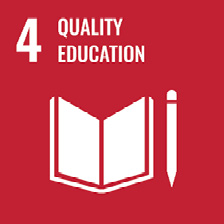
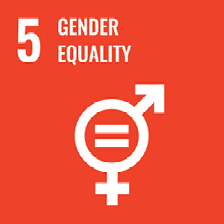

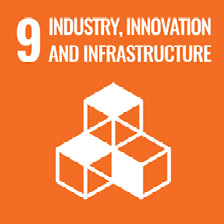
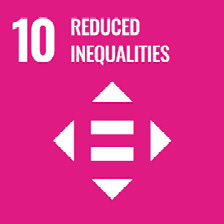
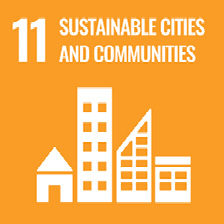
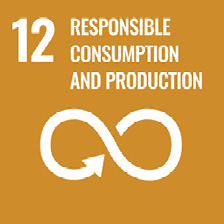
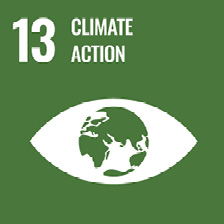
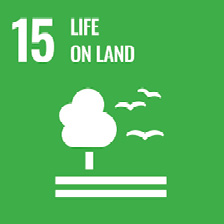
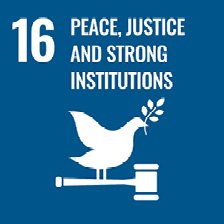
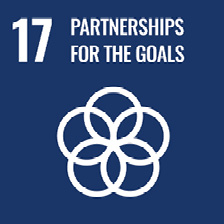
- Paris Climate Agreement
- China National Sword Policy
Sustainable Development Goals
Our Global Commitment
In September 2015, 193 countries committed to the United Nations Sustainable Development Goals (SDG). These goals provide a global roadmap for all countries to work towards a better world for current and future generations. CN immediately declared our support and intention to deliver the SDGs and began proactively implementing action and engagement. We are committed to contributing to the achievement of the SDGs and have been working towards increasing and improving our contribution to this shared global vision. Newcastle 2040 and our ongoing engagement with the community shape our localisation of the goals, and we apply the ideals and intent of the SDGs throughout our organisation. The interconnectedness and integration of actions towards the SDG targets has influenced the development of themes, priorities and objectives within Newcastle 2040. The SDGs are significant and will take time to achieve. However, it is important to recognise the steps we are taking to progress these goals. The United Nations recognises that we are putting extreme pressure on our global environment and has declared this decade ‘the Decade of Action’ for achieving the SDGs. While CN recognises the importance of all 17 SDGs, we have focused our efforts on the areas where we can have the most impact in our local communities. The 17 SDGs are outlined on the following page. CN supports the Sustainable Development GoalsLocalising SDGs for Newcastle
| SDG | SDG and how it is addressed by CN |
|---|---|
 | Goal 3. Ensure healthy lives and promote wellbeing for all at all ages CN has a strong focus on the health and wellbeing of the community. We are working in partnership with the health and community sector on identified local priorities, such as mental health and overall wellbeing, while promoting healthy lifestyles. |
 | Goal 4. Ensure inclusive and equitable quality education and promote lifelong learning opportunities for all CN supports opportunities and initiatives that help to build the educational basis for lifelong learning. From early childhood programs at the library through to vocational education and training support for workers, we are focused on improving the inclusivity and equity of education and training to support community outcomes. |
 | Goal 5. Achieve gender equality and empower all women and girls CN promotes opportunities to recognise and celebrate the rights of women and girls and to fully participate across the spectrum of political, economic and public life. We enable and empower women through our own employment practices and by supporting information and communications technology programs and advocacy. We support organisations and charities that actively focus on the unique experiences of women and girls. |
 | Goal 8. Promote sustained, inclusive and sustainable economic growth, full and productive employment and decent work for all CN encourages equal opportunities for all by actively considering inclusivity across our program design. Our strategies and programs support innovative, productive enterprises that provide decent job creation and promote local culture, economy and products. |
 | Goal 9. Build resilient infrastructure, promote inclusive and sustainable industrialization and foster innovation CN is taking action to build the resilience of our city’s infrastructure. We are consistently identifying and promoting inclusive, sustainable solutions to modern challenges in new and responsive ways. |
 | Goal 10. Reduce inequality within and among countries CN is progressively achieving greater equality by identifying and eliminating inequalities of outcomes through appropriate legislation and policies, and through the way we operate and interact in our community and beyond. We provide direct investment and promote social, economic and political inclusion through action and initiatives. We also seek active participation and representation, reflective of our community makeup, in the development of all our guiding strategies. |
 | Goal 11. Make cities and human settlements inclusive, safe, resilient and sustainable SDG 11 is considered the local government-driven goal and our work in creating a sustainable city is extensive. CN commits to building a sustainable city through initiatives and advocacy in housing; transport and natural heritage; waste, green and public space; and the deliberate planning of our city using local materials. |
 | Goal 12. Ensure sustainable consumption and production patterns CN aims to move towards more sustainable patterns of consumption and production, including reviewing and improving on waste and natural resource use. |
 | Goal 13. Take urgent action to combat climate change and its impacts CN is leading in many aspects of climate change policy, strategy and planning. We are working to mobilise and improve our capacity and that of our community through education, awareness-raising and strategies for climate change mitigation, adaptation, impact reduction and early warning. We are building and transitioning to green jobs and encouraging sustainable, inclusive growth of climate-aware enterprise. |
 | Goal 14. Conserve and sustainably use the oceans, seas and marine resources for sustainable development With some of the best beaches in the world, Newcastle values its coastline, and CN recognises our responsibility to ensure its conservation, resilience and restoration. The need to sustainably manage marine resources for the use of our community is integral to our future, as is the positioning of Newcastle as an international tourist destination. |
 | Goal 15. Protect, restore and promote sustainable use of terrestrial ecosystems, sustainably manage forests, combat desertification, and halt and reverse land degradation and halt biodiversity loss Protecting the natural assets, green space and biodiversity of our region is an important part of CN’s work. We have mobilised resources toward management, conservation and planning to ensure biodiversity and sustainable ecosystems. |
 | Goal 16. Promote peaceful and inclusive societies for sustainable development, provide access to justice for all and build effective, accountable and inclusive institutions at all levels CN seeks to be inclusive, participatory and representative in all our decision-making. Our continuous improvement processes focus on our effectiveness, accountability and transparency with public access to information. Our initiatives focus on how our work impacts the community and how we can best ensure safety and security for all, especially the most vulnerable members of our community. |
 | Goal 17. Strengthen the means of implementation and revitalize the Global Partnership for Sustainable Development CN has a strong focus on building and maintaining partnerships for the progress of the SDGs. Through formal and informal partnerships, we are able to best effect change on behalf of our community and to mobilise resources and expertise for the good of Newcastle. In building partnerships, we build our community. |
Our priorities for Newcastle
Liveable Newcastle
Sustainable Newcastle
Creative Newcastle
Achieving Together
Liveable Newcastle
Our neighbourhoods are safe and thriving, with diverse and equitable housing and social and urban infrastructure that supports local living. Our public places bring people together for active living and social connection. We plan for areas of identified growth areas, ensuring that the things we want and need are nearby and easily accessible. Our city is walkable, connected by safe roads and accessible parking, and options for active transport are available, enabling access to services and facilities. Our community is connected and equitable, and everyone is valued.We use innovation and technology and promote health, wellbeing and equal opportunities to increase residents’ quality of life.






Why Liveable Newcastle?
The following priorities have been identified as key to achieving a Liveable Newcastle:

Enriched neighbourhoods and places
Places are well planned to be meaningful, engaging and accessible to all. Sustainable, healthy and inclusive streets, open spaces, and neighbourhood centres with unique character and heritage are important. We value public safety and places supported by planned infrastructure that bring people together for active living and social connection. Pride in the culture and heritage of our city enhances our sense of identity.
Safe, active and linked movement across the city
Moving across the city with ease is important to the liveability of Newcastle. Diverse transport options, active travel and safe roads play a major role in keeping us physically connected to work, leisure and services. Active transport becomes the preferred transport method for people of Newcastle. Every time someone rides or walks to work, to university, to the beach or to the local shops instead of using a car means less congestion, less noise, less pollution and better streetscapes for people.How will we get there?
You told us that you want a Liveable Newcastle. Liveable Newcastle is about creating a great city for our community to live in, and supporting all members of our community to succeed and live well.
“Active transport including footpaths for a more walkable city, and bike parking”
- Youth Week Open Day
“Well planned and sustainable development, green spaces, social and affordable housing”
- Online ideas board
“Dual indigenous signage in public places”
- Olive Tree Market
Priorities and objectives
-
 Deliver
Deliver -
 Partner
Partner -
 Advocate
Advocate
1.1 Enriched neighbourhoods and places
1.1.1 Create and maintain vibrant, inclusive and well-designed public spaces1.2 Safe, active and linked movement across the city
1.2.1 Develop accessible connected cycleways and pedestrian networksCommunity and service indicators
Community Indicators
| Priority | Community indicators | Target | Baseline | Why this is important | Source |
|---|---|---|---|---|---|
| All | Overall quality of life in Newcastle | Trending up | 75% of residents rate their quality of life in Newcastle as very good or excellent. 32% of residents stated that quality of life has improved over the past 3 years. | The liveability and wellbeing score is based on community perceptions of what Newcastle is like to live in and the quality of life of its residents. It takes into consideration elements such as environmental quality, safety, learning and health provision, access to shops and services, recreational facilities and cultural activities. | CN – Liveability and Wellbeing Survey |
| Recommending Newcastle as a place to live | Trending up | 88% agree/strongly agree (48% strongly agree; 39% agree) | By recommending Newcastle as a desirable place to live, the community can drive positive change and create a thriving environment for current and future residents. | CN – Liveability and Wellbeing Survey | |
| Considering moving out of Newcastle in the next five years | Trending up | 83% said no | This indicator reflects Newcastle is a desirable place to live with lots of opportunity and a good quality of life. | CN - Liveability and Wellbeing Survey | |
| 1.1 Enriched neighbourhoods and places | Number of recorded criminal incidents for major offences | Trending down | 9,133 major offences from Jan-Dec 2021 | We want Newcastle to be a safe city, both in the public domain and within households. The number of major crimes in Newcastle impacts safety levels, both perceived and actual, of community members. Crime prevention may indicate a reduction in social vulnerabilities that influence crime such as inequality, poverty and lack of options. | NSW Bureau of Crime Statistics and Research https://bocsar.nsw.gov.au/documents/publications/rcs/rcs-quarterly/nsw-recorded-crime-dec-2021.pdf |
| 1.2 Safe, active and linked movement across the city | Travel patterns on an average weekday for residents | Trending down (Vehicle use) | 2019/20 - Mode Share% Vehicle Driver - 56.5% Vehicle Passenger - 16.1% Train - 1.5%; Bus - 5.7% Walk/Cycle/Other - 21.3% | The Household Travel Survey collects information about people’s day-to-day travel, such as where they go, when they travel, the purpose of the trip, the modes of transport used and the costs associated with the trip. The data collected in the survey is essential to gain a complete picture of travel patterns in the LGA and how they change over time. The aim is to have the mode of travel shift away from vehicle use. | NSW Transport – Household Travel Survey (HTS) |
Service Indicators
| Priority | Service indicators | Target | Baseline | Why this is important | Source |
|---|---|---|---|---|---|
| 1.2 Safe, active and linked movement across the city | Cycle-friendly and walkable city (Source: CN Liveability and Wellbeing Survey) | Trending up | 59% agree/strongly agree that Newcastle is a cycle friendly city. (Strongly agree - 24%, agree - 35%). 71% agree/strongly agree that Newcastle is a walkable city. (Strongly agree - 36%, agree - 35%) | Walking and cycling are healthy, affordable and clean forms of travel available to almost all ages and groups in society. In Newcastle, the large majority of trips are at distances that could reasonably be undertaken by utilsing cycling and pedestrian networks. Coupled with large areas of relatively flat topography and Newcastle’s favourable climate, potential for mode substitution is high, and this indicator assesses the perceived walkability and cycle-friendly nature of our city. | CN – Liveability and Wellbeing Survey |
Sustainable Newcastle
Our environment sustains our community, economy, health and wellbeing. It is at the heart of all that we do. Our city acts on climate change to achieve net zero emissions and build resilience in our community, infrastructure and natural areas. We protect, enhance and connect our green and blue networks, and we’re transforming our city through circular economy solutions.





Why Sustainable Newcastle?
The following priorities have been identified as key to achieving a Sustainable Newcastle:

Action on climate change
We respond to the climate emergency by committing to net zero emissions and preparing for risks from increasing temperatures, storms, coastal erosion, flooding and bushfires. Decisions we make build resilient communities, infrastructure and natural areas.
Nature-based solutions
We manage and enhance our blue, green and natural spaces for biodiversity, recreational amenity and human wellbeing through education and engagement of our local community. We strengthen our blue and green grid through sustainable, integrated management that is adaptable to current and future risks. We regenerate our natural systems including our waterways and beaches, to support healthy, bio-diverse systems, minimise pollution and maintain recreational amenity through collaboration with our community and industry partners.
Circular economy
Through our transition to a circular economy, we design out waste, creating new opportunities and technologies in our local economy, promoting renewable products and sustainable infrastructure, and rethinking our use of resources as a circular flow.How will we get there?
You told us that you want a Sustainable Newcastle. Sustainable Newcastle is about valuing our natural environment and responding to challenges such as climate change, biodiversity loss and overuse of resources.
“Sustainable development and Indigenous land management practices”
- Rising for the Embers Festival
“More public infrastructure for EV charging”
- Online survey
“Green living spaces with a lot of shade options”
- Online survey
Priorities and objectives
-
 Deliver
Deliver -
 Partner
Partner -
 Advocate
Advocate
2.1 Action on climate change
2.1.1 Support the transition to net zero emissions2.2 Nature-based solutions
2.2.1 Protect and regenerate natural systems2.3 Circular economy
2.3.1 Design out waste and promote resource recovery and reuseCommunity and service indicators
Community Indicators
| Priorities | Community indicators | Target | Baseline | Why this is important | Source |
|---|---|---|---|---|---|
| All | City-wide greenhouse gas emissions from electricity | 100% reduction in greenhouse gas emissions from electricity by 2030 | 1,886,000 tonnes CO2e (61% of total emissions) (2020/21) | Emissions from electricity make up approximately half of all community emissions. However, it’s an emission source that we can rapidly reduce through energy efficiency, and switching to renewable energy. | Snapshot Climate - Australian Emissions Profile, Newcastle Municipality |
| Community greenhouse gas emissions | Net zero greenhouse gas emissions in Newcastle LGA by 2040 | 3,080,000 tonnes CO2e (2020/21) | Our community, including local businesses and industries, generates greenhouse gases that contribute to global climate change. We are tracking emission sources and identifying reduction strategies to achieve our commitment of net zero by 2040. | Snapshot Climate - Australian Emissions Profile, Newcastle Municipality | |
| Electric vehicle (EV) car sales in the Newcastle LGA | EV car registrations in Newcastle LGA increased to 52% of total car registrations by 2030/31 | 330 electric vehicles (0.14%) of all registered cars (148,047) in the Newcastle LGA (2022) | Privately owned fossil-fueled vehicles contribute to our city’s carbon emissions, along with air and noise pollution. Transitioning to electric vehicles powered by renewable energy will significantly reduce our community’s emissions profile. | Transport NSW Registration snapshot report | |
| Newcastle LGA tree canopy cover | 40% tree canopy cover in Newcastle LGA by 2045 | 26.4% of the entire LGA land register with the exclusion of water bodies (2021) | An increase in our canopy cover as well as replacement of existing trees in our road reserves and parklands improves biodiversity and wildlife, reduces urban heat and makes our spaces more attractive. | CN GIS data | |
| Road canopy reserve cover under CN care and control | 30% road reserve canopy cover by 2045 | 21.7% road reserve canopy cover (2021) | Road reserve is the area covered by road pavement and footways under CN ownership as per CN’s Road Register. Open space is CN public lands zoned C1-4 or RE1 (Newcastle’s Land Register), with exclusion of water bodies, bushland natural assets, wetland natural assets and sportsground fields. | CN GIS data | |
| Open space canopy cover under CN care and control | 40% open space canopy cover by 2045 | 31.8% open space canopy cover (2021) | Open space is CN public lands zoned C1-4 or RE1 (Newcastle’s Land Register), with exclusion of water bodies, bushland natural assets, wetland natural assets and sportsground fields. Road reserve is the area covered by road pavement and footways under CN ownership as per CN’s Road Register as per our GIS data. | CN GIS data | |
| 2.2 Nature-based solutions | Satisfaction with our green, blue and wild spaces | Satisfaction levels maintained | Satisfied/very satisfied: 60% beaches and beach facilities 58% wetlands and estuaries | CN plays a role in the provision of green, blue and wild spaces for the health and enjoyment of the community. Community satisfaction with these spaces is examined in the annual satisfaction survey with the aim to maintain or increase satisfaction scores year on year. Our community should be satisfied with the environmental assets and services that CN provides. | CN Satisfaction Survey |
| Per capita household water usage (5-year average) | Trending down | 139kL annual dwelling consumption 150kL (5-year average) (2020/2021) | Our community can reduce their water usage through efficiency and behavioural change, allowing us to ensure water is preserved and not wasted. | Hunter Water – State of the Environment Report | |
| 2.3 Circular economy | Municipal waste diversion from landfill | Trending up | 40% in 2020/21 (Domestic recycling rate) | Waste is just 'stuff in the wrong place' – we must move away from putting materials into landfill and find ways to rethink, refuse, reduce, repurpose, reuse, recycle and rot! The benefits are to reduce the environmental effects of landfill but also to keep materials in use longer, reducing creation and consumption costs. | CN data |
Service Indicators
| Priority | Service indicators | Target | Baseline | Why this is important | Source |
|---|---|---|---|---|---|
| 2.1 Action on climate change | Greenhouse gas emissions from CN operations | Net zero emissions by 2030 (from transport fuels, fossil-based gas and LPG, water and wastewater and office paper) | 5,098 tonnes CO2-e (2020) | The assets, services and operations of CN create emissions that contribute to the global effect of climate change. Moving to net zero emissions allows us to reduce our contributions to climate change and also provide leadership to our community and broader. | CN data |
Creative Newcastle
Our city is vibrant, inclusive and creative. Newcastle is a destination known for its culture, heritage, entertainment and innovative ideas. We are excited about the city’s opportunities in the areas of jobs, education and the economy. Multiculturalism, Aboriginal culture, diverse communities and the arts are celebrated. Locals and visitors gather for events and cultural experiences, and to feel part of the community. Newcastle is driven by city-shaping partnerships that enhance our opportunities and attract people to live, play and invest in our city.



Why Creative Newcastle?
The following priorities have been identified as key to achieving a Creative Newcastle:

Vibrant and creative city
We are a vibrant city, actively shaped by our culture, heritage, entertainment and bold ideas. We are a welcoming city, activated day and night with diverse offerings. We are a visitor and events destination with a rich art, culture and foodie scene and accessible nature-based and coastal experiences.
Opportunities in jobs, learning and innovation
We are excited about opportunities for work, education and lifelong learning, now and into the future. These opportunities will result in skilled and innovative people in our city.
Connected and fair communities
Connected and fair communities value all people and embrace diversity. We are respectful of culture and work towards inclusion to achieve a sense of belonging for all. We promote health, wellbeing, digital inclusion and equal opportunities to improve quality of life.
City-shaping partnerships
Newcastle is driven by city-shaping partnerships that enable success and attract people to live and invest in our city. We leverage the growth sectors of the new economy to allow the city to think globally and act locally. We retain Newcastle’s unique identity while embracing innovation and change that will unlock the city’s potential.How will we get there?
You told us that you want a Creative Newcastle. Creative Newcastle is about creating a city full of opportunities for enjoyable experiences, economic success, innovation and celebration.
“Ensuring ongoing funding for arts and culture in Newcastle. And equity of access to available funding ie giving new ideas a go”
- Online survey
“More free community space, cultural and creative events”
- Online survey
Priorities and objectives
-
 Deliver
Deliver -
 Partner
Partner -
 Advocate
Advocate
3.1 Vibrant and creative city
3.1.1 Plan, support and deliver vibrant events and programs3.2 Opportunities in jobs, learning and innovation
3.2.1 Provide inclusive learning and employment3.3 Connected and fair communities
3.3.1 Support strong social and cultural connections3.4 City-shaping partnerships
3.4.1 Optimise city opportunitiesCommunity and service indicators
Community Indicators
Community indicators: CN uses these indicators to track trends and ensure the changes that have occurred are moving us towards our vision. Community indicators will only show trend-lines. Service indicators: The high-level impacts of CN’s service delivery on our city and the community. Service indicators will have targets set once baselines have been established.| Priorities | Community indicators | Target | Baseline | Why this is important | Source |
|---|---|---|---|---|---|
| 3.1 Vibrant and creative city | Number of domestic visitors travelling to the Hunter Region | Trending up | 8.5 million visitors | Newcastle is a contemporary urban playground, steeped in heritage, bustling with arts and culture with a vibrant night-time economy, with stunning coastal scenery. Celebrating and promoting the city, its events, its natural assets and its cultural heritage is anticipated to result in increased numbers of visitors to our LGA in the future. | Destination NSW |
| Newcastle has a thriving arts and culture scene | Trending up | 55% agree/strongly agree (19% strongly agree; 36% agree) | A vibrant arts scene can attract tourists and visitors and contribute to the economy. It allows social cohesion and creative expression, provides inspiration and educational opportunities. Access to arts initiatives enhances quality of life, providing entertainment, enrichment and leisure options. | CN – Liveability and Wellbeing Survey | |
| 3.2 Opportunities in jobs, learning and innovation | Unemployment rates by age group (youth specifically) | Trending down | Newcastle and Lake Macquarie | The unemployment rate is defined as the percentage of unemployed workers in the total labour force. It is widely recognised as a key indicator of the performance of a place's labour market. The unemployment rate doesn't just impact those individuals who are jobless – the level and persistence of the factors of unemployment have wide-ranging impacts across the broader economy. | ABS – Labour Force Data |
| Early Childhood Development Index | Trending down | 19.6% of children vulnerable in at least one domain (2018) | The Australian Early Development Census (AEDC) measures the development of children in Australia in their first year of full-time school. The census consists of approximately 100 questions across five key domains, which are closely linked to child health, education and social outcomes. | ||
| Number of international students | Trending up | 7,399 international students enrolled at University of Newcastle (Dec 2019) | International students not only provide economic benefits to the city but also enrich learning environments and communities with cultural perspectives. | University of Newcastle’s Annual Report | |
| Recommending Newcastle as a place to work | Trending up | 76% agree/strongly agree (24% strongly agree; 52% agree) | A positive recommendation for Newcastle as a place to live may assist in job creation, talent attraction, economic growth, improved community infrastructure, diversity and inclusion. | CN – Liveability and Wellbeing Survey | |
| % of Newcastle population with a post-school qualification | Trending up | 65% for the Newcastle LGA (2021 Census) | A higher percentage of the community with post-school qualifications can boost economic development, innovation, workforce competitiveness and reduce unemployment. It also leads to lower crime rates, better health outcomes and improved quality of life, contributing to more resilient thriving communities with better social outcomes. | ABS Census Data | |
| Newcastle is a good place to grow or start a business | Trending up | 58% agree/strongly agree (18% strongly agree; 40% agree) | Newcastle’s proximity to major markets provides easy access to transport and logistic networks. It is home to reputable educational institutions that produce a skilled workforce with a growing focus on innovation. Newcastle is committed to sustainability, has a supportive business environment and it offers a vibrant lifestyle and strong community. | CN – Liveability and Wellbeing Survey | |
| Newcastle is a good place to invest | Trending up | 64% agree/strongly agree (19% strongly agree; 42% agree) | Newcastle’s proximity to major markets provides easy access to transport and logistic networks. It is home to reputable educational institutions that produce a skilled workforce with a growing focus on innovation. Newcastle is committed to sustainability, has a supportive business environment and it offers a vibrant lifestyle and strong community. | CN – Liveability and Wellbeing Survey | |
| Rate of economic growth - Gross Regional Product (GRP) | Trending up | $18.4 billion (Dec 2021) | GRP is a net measure of wealth generated by region. It has been measured using an expenditure approach where all forms of final expenditure are added as per Gross State Product methodology. | Profile ID | |
| Increase population of ATSI people aged 25-36 who have completed a tertiary qualification | Trending up | 62.2% (2021 Census) | The National Agreement on Closing the Gap (the National Agreement) has 19 national socio-economic targets across areas that have an impact on life outcomes for Aboriginal and Torres Straight Islander (ATSI) people. Target 6 - By 2031, increase the population of ATSI people aged 25-36 years who have completed a tertiary qualification (certificate III and above) to 70%. The outcome for Target 6 is for ATSI students to reach their full potential through further education pathways. | ABS | |
| 3.3 Connected and fair communities | Rental Affordability Index | Trending down | 90.48 as at June 2021 | Housing affordability has become a major issue across Australia and an indication of the seriousness of the problem is the number of people experiencing housing stress. Renting households are more affected than homeowners. The rental affordability index (RAI) report is an indicator of rental affordability relative to household incomes. | SGS Economics and Planning |
| Potentially preventable hospitalisations | Trending down | 2,085.5 per 100,000 population in 2019/20 | Potentially Preventable Hospitalisations (PPH) are those conditions for which hospitalisation is considered potentially avoidable through preventive care and early disease management, usually delivered in an ambulatory (walk-in) setting, such as primary health care. | ||
| Number of housing stressed households in Newcastle LGA | Trending down | 23.8% (4,935 of 207,000 households) (2021) | Housing affordability has become a major issue across Australia and an indication of the seriousness of the problem is the number of people experiencing housing stress. Renting households on average have lower-incomes, and therefore affordability issues affect renting households more than homeowners. The rental affordability index (RAI) report is an indicator of rental affordability relative to household incomes. | https://homelessnessnsw.org.au/data/housing-and-homelessness-dashboard/ | |
| Recommending Newcastle as a place to play | Trending up | 80% agree/strongly agree (39% strongly agree; 41% agree) | Recognising that Newcastle is a desirable place to ‘play’ may assist in boosting tourism, attracting festivals or events, promote a healthy lifestyle and generally add to our quality of life. | CN – Liveability and Wellbeing Survey | |
| Number of people sleeping rough in the Newcastle LGA (street count) | Trending down | 50 (2020) | Counting the number of people sleeping rough in Newcastle is essential for informed decision-making, effective resource allocation, and ultimately, creating sustainable solutions to homelessness. | https://homelessnessnsw.org.au/data/housing-and-homelessness-dashboard/ | |
| % households in need of affordable housing | Trending down | 5.8% (2021) | Knowing how many households are in need of affordable housing is vital for effective policymaking, resource allocation, and long-term community planning, ultimately leading to more equitable and sustainable housing solutions. | ABS Estimating Homelessness 2021 and ABS Census 2021 (ID) | |
| Number of Short-Term Rental Accommodation Dwellings - Full Property Only | Monitor | 618 (2023) | Knowing the number of short-term rental accommodations is crucial for effective governance, community planning, and ensuring a balanced approach to housing and tourism. | https://homelessnessnsw.org.au/data/housing-and-homelessness-dashboard/ | |
| SEIFA Index of Disadvantage for the Newcastle LGA | Monitor | 1,012 (2021) | The SEIFA Index of Disadvantage is a crucial tool for understanding socio-economic conditions, guiding policy and resource allocation, and promoting social equity. |
Service Indicators
| Priorities | Service indicators | Target | Baseline | Why this is important | Source |
|---|---|---|---|---|---|
| 3.1 Vibrant and creative citys | Return on investment (ROI) on events sponsored by CN | Trending up | $30 for every $1 invested (June 2022) | Newcastle has positioned itself as an events city with events delivering both an immediate and ongoing benefit for the community and economy, with greater visitation, investment and liveability outcomes. The economic benefit of events sponsored by CN can be evaluated through examination of the ROI for these events. | CN data |
| 3.3 Connected and fair communities | Diversity of cultural expression | Trending up | 62% agree/strongly agree (21% strongly agree; 41% agree) | The identity of Newcastle is influenced by the quality and diversity of our cultural activities. This indicator assesses community perceptions of the diversity of cultural expression in the city. | CN – Liveability and Wellbeing Survey |
| 3.4 City-shaping partnerships | Value of building approvals - State Significant Developments | Trending up | $1.10 billion in building approvals (2020/21) (DAs - $807.70 million CDCs - $114.96 million SSDs - $180.54 million) | Building approvals provide strong economic benefits such as jobs and services to boost local economies, while also delivering the infrastructure needed to create cohesive and engaged local communities. | CN data |
Achieving Together
Our people come together to collaborate, share great ideas and opportunities, and co-create positive change for our organisation and city. Our culture is one of trust and understanding, where honest conversations empower our people, customers and community. We value diverse perspectives and deliver what we promise. Our strength is growing our capability to manage community and customer expectations and continuously improve our service delivery.



Why Achieving Together?
The following priorities have been identified as key to Achieving Together:

Inclusive and integrated planning
Considered, holistic planning is crucial to the city’s future growth – locally, regionally and globally. We use evidence-based decision-making for the development of our policies and strategies and undertake research to understand the trends and issues affecting our community. We have good governance that supports transparency in monitoring outcomes and reporting them to the community.
Trust and transparency
Our culture encourages empathy, understanding and willingness to help each other. We have trust and confidence in the leadership of our city and work together to create better outcomes for our customers and community. Our culture values integrity and accountability and encourages open, transparent decision-making. We promoteour opportunities and celebrate our stories.

Collaborative and innovative approach
We build strong relationships where knowledge is exchanged. Effective collaboration between our people, community, businesses, industry and government is essential. Innovative services and data-driven decision making empower our people and community, and continuously improve our service delivery. Harness the digital transformation of the organisation to drive innovative approaches and insights using quality data to make strategic decisions that align with our vision, provide consistency and transparency, and promote continuous improvement.How will we get there?
You told us that Achieving Together was important. Achieving Together involves our people coming together to collaborate, share great ideas and opportunities, and co-create positive change for our organisation and city.
“Specific engagement with diverse communities including Indigenous peoples, LGBTQ+ and migrant communities”
- Online survey
“The objectives and priorities provides ambitious yet achievable outcomes for the future of Newcastle”
- Online survey
“Overall, it sets a framework for which the City can work together to achieve great outcomes”
- Online survey
Priorities and objectives
-
 Deliver
Deliver -
 Partner
Partner -
 Advocate
Advocate
4.1 Inclusive and integrated planning
4.1.1 Ensure financial sustainability4.2 Trust and transparency
4.2.1 Foster genuine community engagement4.3 Collaborative and innovative approach
4.3.1 Build a collaborative organisational cultureService indicators
Service Indicators
| Priorities | Service indicators | Target | Baseline | Why this is important | Source |
|---|---|---|---|---|---|
| 4.1 Inclusive and integrated planning | 1. Operating performance ratio | 1. >0.00% 6. >3.00 months | 1. (8.16)% 6. 6.62 months (Nov 2021) | Accurate and timely financial reporting provides vital information on CN's financial position, outlook and performance. It is an important tool used to ensure councils are made accountable for their actions. Baselines have been set by the Office of Local Government (OLG). | CN Financial Statements |
| Long-term planning and vision for the city | Great than 3.5 | 3.3 (2021) | During engagement for Newcastle 2040, the community told us that considered and long-term planning should be a key focus area to ensure our vision of a liveable, sustainable, inclusive global city is obtained. Community views on the success of CN to plan long-term is gained through the annual satisfaction survey with the aim to increase satisfaction scores year on year. | CN – Satisfaction Survey | |
| 4.2 Trust and transparency | Trust in CN | Trending up | 71% have at least some level of trust in CN - Complete trust -5% - A lot of trust - 23% - Some trust - 43% | Trust in CN centres on the community's belief that CN will act consistently with their expectations of positive behaviour. CN will gauge community perception of trust in CN through surveying areas such as responsiveness, reliability, integrity, openness and fairness. | CN – Liveability and Wellbeing Survey |
| Response to community needs | Greater than 3.0 | 3.4 (2021) | A key responsibility of CN is to respond to community needs. The community perception of this response is gained through the annual satisfaction survey and indicates the success of CN in this space. | CN – Satisfaction Survey | |
| Number of people engaged through our community engagement | Trending up | 20,300 people provided feedback on plans, projects and activities (2020/21) | Genuine community engagement is a key element in achieving the priority of trust and transparency. The number of people engaged with across all CN projects and activities gives an indication of the level of community engagement across the city. | CN data | |
| Information about CN and its decisions are clear and accessible | Trending up | 45% (2021) | Clear communication in regard to decisions indicates transparency, reflects accountability and fosters trust between CN and the community. The process provides a feedback mechanism to educate the community and encourage collaboration. | CN – Liveability and Wellbeing Survey | |
| 4.3 Collaborative and Innovative approach | Value of community grants | Trending up | $585,110 for community grants program in 2021 | CN collaborates with numerous government organisations, businesses, community groups and individuals to deliver positive outcomes for the Newcastle community. Our Community Grants provide a number of funding opportunities to support initiatives that contribute to the social, cultural, environmental and economic life of the city. | CN data |
| Value of inwards grants | Trending up | $46 million in Federal and State Government grants and contributions (2020/21) | Federal and State Government contributions assist CN to provide facilities and services to the community. | CN data | |
| Number of advisory and standing committees and number of meetings held | Maintain | 8 committees met a total of 39 times in 2021 | CN collaborates with numerous government organisations, businesses, community groups and individuals to deliver positive outcomes for the Newcastle community. A number of Advisory Committees have been established to provide advice and inform decision making on specific areas. | CN data |
Newcastle 2040 Appendix
How to read Newcastle 2040
The following information helps to explain the key headings and terminology used in the plan.
Theme
Our themes provide structure for this plan and inspire our vision to be a liveable, sustainable, inclusive global city. The themes have been developed in consultation with our community.Sustainable Development Goals (SDGs)
The United Nations SDGs are established global goals that provide a roadmap for all countries towards a better world for current and future generations. We aim to contribute to achieving the SDGs through delivery of community objectives and strategies.Council’s Role
What we can do?
While CN has a custodial role in initiating, preparing, and maintaining Newcastle 2040 on behalf of the community, it is not wholly responsible for its implementation. CN’s role, depending on the activity being undertaken, is to Deliver, Partner, and/or Advocate.Objectives
The objectives represent what we want to accomplish and the outcomes CN wants to achieve for the community.Priorities
The priorities are the community’s high-level focus areas for Newcastle. They contribute to achieving each of the four themes. The Community Strategic Plan centres on four essential questions, which are highlighted throughout this report. These questions help us clearly define our current state, articulate our future aspirations, and outline the necessary steps to achieve them.Where are we now?
Who we are as a community, the identity of the region we live in and what we do. This sets a baseline for where we are right now. We have included indicators and measures from both community statistics and CN’s data to help paint this picture.
Where do we want to be in ten year’s time?
Engaging our community to hear what they want for the Newcastle Local Government Area over the next 10 years is the primary aim of the Community Strategic Plan. A variety of engagement opportunities are offered to ensure we connect with diverse sections of the community including young people, people with disability, culturally and linguistically diverse groups and Aboriginal people. The community consultation has directed the development of our four key themes, as well as the priorities and objectives under these, to reflect community aspirations and the elements that the Newcastle community value.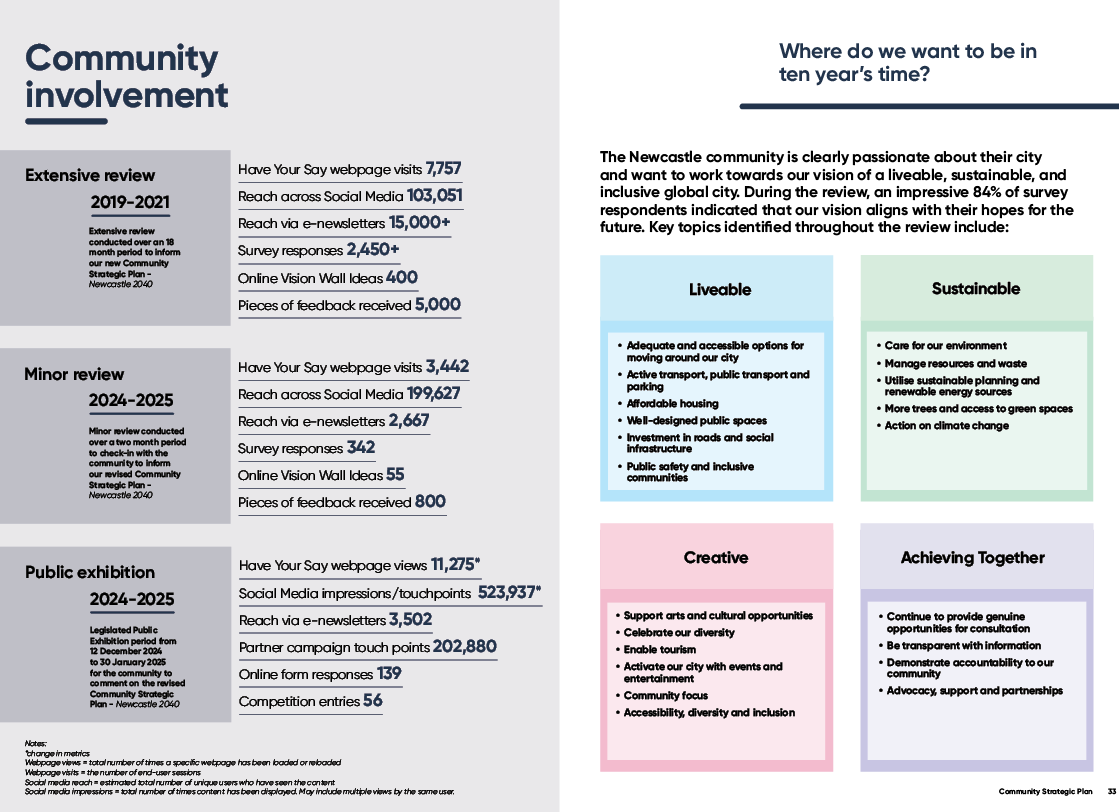
How will we get there?
Our priorities represent what we want to accomplish while indicators and measures from both community statistics and CN’s data will assist us in determining how well we are tracking towards our vision.
How will we know when we have arrived?
CN’s State of Our City Report tracks key indicators and measures to provide an update on progress towards achieving Newcastle 2040’s shared vision for a liveable, sustainable and inclusive global city. It is important to note that CN is not solely responsible for the implementation of this document, we work with various stakeholders and partners to deliver the vision. Further information on progress of Newcastle 2040 please refer to the State of the City Report on CN’s website.
Alignment with state and regional priorities
The following information shows how Newcastle 2040 priorities and objectives align with key state and regional plans. For more information on these state and regional plans, see the Links for further information section of the Appendix.Newcastle 2040 Objectives – State
| Themes | Priorities | NSW 2021 | Premier's Priorities | State Plan NSW Housing | NSW State Infrastructure Strategy | NSW Smart Places Strategy | NSW Disability Inclusion Action Plan | NSW Net Zero Plan | Future Transport Strategy 2056 |
|---|---|---|---|---|---|---|---|---|---|
| Liveable | 1.1 Enriched neighbourhoods and places | All | All | 1.1.4 | All | 1.1.1 | 1.1.1 | 1.1.5 | 1.1.1 1.1.5 |
| 1.2 Safe, active and linked movement across the city | 1.2.1 | 1.2.1 | 1.2.1 | ||||||
| Sustainable | 2.1 Action on climate change | 2.1.3 | 2.1.1 | 2.1.1 | |||||
| 2.2 Nature-based solutions | 2.2.1 | 2.2.1 | 2.2.2 | 2.2.2 | |||||
| 2.3 Circular economy | 2.3.3 | 2.3.1 | 2.3.1 | ||||||
| Creative | 3.1 Vibrant and | 3.3.3 | 3.1.3 | 3.1.3 | |||||
| 3.2 Opportunities in jobs, learning and innovation | 3.2.1 | 3.2.1 | 3.2.1 | 3.2.1 | 3.2.1 | ||||
| 3.3 Connected and fair communities | 3.3.1 3.3.2 3.3.3 | 3.3.1 3.3.2 3.3.3 | 3.3.1 3.3.2 3.3.3 | 3.3.3 | 3.3.1 3.3.2 3.3.3 | 3.3.1 3.3.2 | 3.3.3 | ||
| 3.4 City-shaping partnerships | 3.4.1 | 3.4.1 | 3.4.1 | 3.4.1 | 3.4.1 | 3.4.1 | 3.4.1 | 3.4.1 | |
| Achieving Together | 4.1 Inclusive and integrated planning | 4.1.1 | 4.1.2 | 4.1.2 | 4.1.2 | 4.1.2 | 4.1.2 | 4.1.2 | 4.1.2 |
| 4.2 Trust and transparency | 4.2.1 | 4.2.1 | |||||||
| 4.3 Collaborative and innovative approach | 4.3.1 | 4.3.1 |
Newcastle 2040 Objectives – Regional
| Themes | Priorities | Hunter Region Plan 2041 | Greater Newcastle Metropolitan Plan | Greater Newcastle Transport Plan |
|---|---|---|---|---|
| Liveable | 1.1 Enriched neighbourhoods and places | 1.1.1 | 1.1.1 | 1.1.1 |
| 1.2 Safe, active and linked movement across the city | 1.2.1 | 1.2.4 | 1.2.1 | |
| Sustainable | 2.1 Action on climate change | 2.1.1 | 2.1.1 | |
| 2.2 Nature-based solutions | 2.2.1 | 2.2.1 | ||
| 2.3 Circular economy | ||||
| Creative | 3.1 Vibrant and | 3.1.3 | 3.1.3 | |
| 3.2 Opportunities in jobs, learning and innovation | 3.2.1 | 3.2.1 | ||
| 3.3 Connected and fair communities | 3.3.1 3.3.2 3.3.3 | 3.3.1 3.3.2 3.3.3 | 3.3.3 | |
| 3.4 City-shaping partnerships | 3.4.1 | 3.4.1 | 3.4.1 | |
| Achieving Together | 4.1 Inclusive and integrated planning | 4.1.2 | 4.1.2 | 4.1.2 |
| 4.2 Trust and transparency | ||||
| 4.3 Collaborative and innovative approach |
Sustainable Development Goals
The interconnectedness and integration of actions towards the SDG targets has influenced the development of themes, priorities and objectives in Newcastle 2040.Below are the links between SDG targets and Newcastle 2040 objectives. For further details on SDG targets, visit https://sdgs.un.org/goals.
| Theme | Priority | Objectives |
|---|---|---|
| Liveable | 1.1 Enriched neighbourhoods and places | 1.1.1 Create and maintain vibrant, inclusive and well-designed public spaces |
| 1.1.2 Promote sustainable and accessible urban design | ||
| 1.1.3 Protect and celebrate Newcastle’s heritage | ||
| 1.1.4 Increase access to affordable housing | ||
| 1.1.5 Enhance and protect public safety | ||
| 1.2 Safe, active and linked movement across the city | 1.2.1 Develop accessible, connected cycleways and pedestrian networks | |
| 1.2.2 Maintain safe and efficient road networks | ||
| 1.2.3 Implement effective parking strategies | ||
| 1.2.4 Strengthen active and public transport connections and services | ||
| Sustainable | 2.1 Action on climate change | 2.1.1 Support the transition to net zero emissions |
| 2.1.2 Assess and share climate risks | ||
| 2.1.3 Support climate change adaption by building resilient communities and urban and natural areas | ||
| 2.2 Nature-based solutions | 2.2.1 Protect and regenerate natural systems | |
| 2.2.2 Protect and expand the urban forest | ||
| 2.2.3 Support the transition to a water-sensitive city | ||
| 2.3 Circular economy | 2.3.1 Design out waste and promote resource recovery and reuse | |
| 2.3.2 Support local supply chains and sustainable procurement |
Liveable and Sustainable
SDG Priority 1-9
| Theme |  | 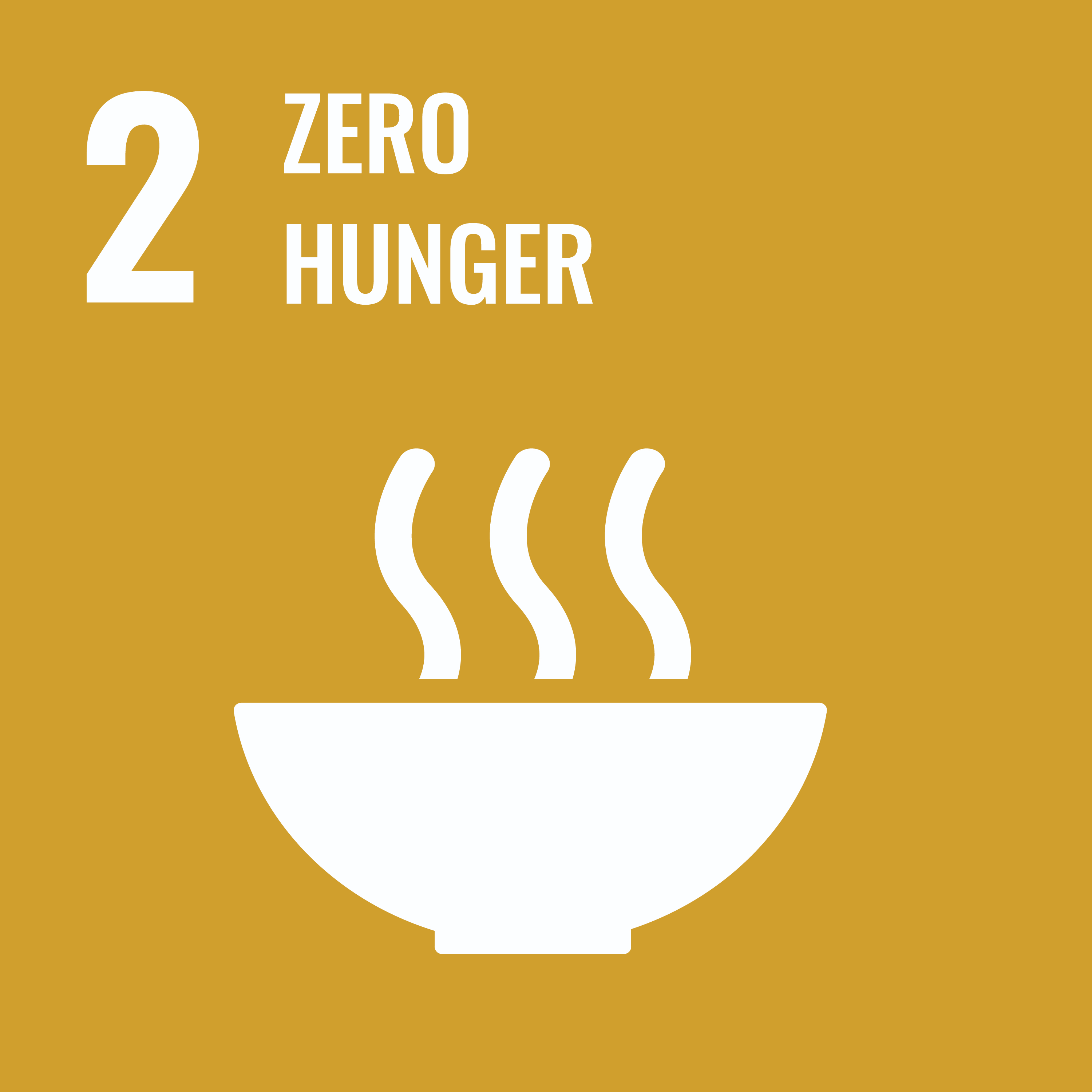 |  |  |  |  |  |  |  |
|---|---|---|---|---|---|---|---|---|---|
| Liveable | 4.1, 4.2, 4.3, 4.4, 4.5, 4.6 | 9.1 | |||||||
| 3.1 | 9.1 | ||||||||
| 1.4, 1.5 | 8.5 | ||||||||
| 3.6 | |||||||||
| 3.1 | |||||||||
| 3.6 | |||||||||
| Sustainable | 7.2 7.3 | 9.4 | |||||||
| 9.4 | |||||||||
| 1.5 | |||||||||
| 6.6 | |||||||||
| 6.4 6.5 | |||||||||
| 6.3 6.4 | |||||||||
| 2.3 | 8.3 8.9 |
SDG Priority 10-17
| Theme |  |  |  |  |  |  |  |  |
|---|---|---|---|---|---|---|---|---|
| Liveable | 11.7 | 16.3 | ||||||
| 16.1 | ||||||||
| 11.4 | ||||||||
| 11.1 | ||||||||
| 16.1 16.2 | ||||||||
| 11.2 | ||||||||
| 11.2 | ||||||||
| 11.2 | ||||||||
| Sustainable | 12.4 | 13.2 | 14.3 | |||||
| 11.3 | 12.6 12.7 12.8 | 13.1 13.2 13.3 | 17.6 17.7 | |||||
| 14.2 | 15.5 15.9 | |||||||
| 15.1 15.2 | ||||||||
| 14.2 | ||||||||
| 11.6 | 12.4 12.5 | 14.1 | ||||||
| 12.7 |
Creative and Achieving Together
| Theme | Priority | Objectives |
|---|---|---|
| Creative | 3.1 Vibrant and creative city | 3.1.1 Plan, support and deliver vibrant events and programs |
| 3.1.2 Position Newcastle as a premier destination | ||
| 3.1.3 Foster cultural vibrancy and creativity | ||
| 3.2 Opportunities in jobs, learning and innovation | 3.2.1 Provide inclusive learning and employment opportunities | |
| 3.2.2 Grow our local skills base | ||
| 3.3 Connected and fair communities | 3.3.1 Support strong social and cultural connections | |
| 3.3.2 Celebrate diversity and champion inclusion | ||
| 3.3.3 Promote and support active and healthy communities | ||
| 3.4 City-shaping partnerships | 3.4.1 Optimise city opportunities | |
| 3.4.2 Advocacy and collaborate across government, industry, business, and community | ||
| Achieving Together | 4.1 Inclusive and integrated planning | 4.1.1 Ensure financial sustainability |
| 4.1.2 Strengthen our integrated planning and reporting | ||
| 4.1.3 Develop a skilled and engaged workforce | ||
| 4.2 Trust and transparency | 4.2.1 Foster genuine community engagement | |
| 4.2.2 Share information and celebrate success | ||
| 4.2.3 Deliver a trusted customer experience | ||
| 4.3 Collaborative and innovative approach | 4.3.1 Build a collaborative organisational culture | |
| 4.3.2 Encourage innovation and continuous improvement |
SDG Priority 1-9
| Theme |  |  |  |  |  |  |  |  |  |
|---|---|---|---|---|---|---|---|---|---|
| Creative | 8.9 | ||||||||
| 8.2 8.3 8.9 | |||||||||
| 8.6 8.8 8.9 | |||||||||
| 4.2 4.4 | 8.1 8.5 | ||||||||
| 8.6 8.8 | 9.5 | ||||||||
| 3.2 | 4.5 4.7 | ||||||||
| 3.2 | |||||||||
| 9.5 | |||||||||
| 4.3 | 8.2 | ||||||||
| Achieving Together | 8.3 | ||||||||
| 5.5 | |||||||||
| 5.1 | |||||||||
SDG Priority 10-17
| Theme |  |  |  |  |  |  |  |  |
|---|---|---|---|---|---|---|---|---|
| Creative | ||||||||
| 10.2 | ||||||||
| 10.2 | ||||||||
| 11.7 | ||||||||
| 11.3 11.7 | 16.1 | |||||||
| Achieving Together | 16.5 | 17.2 17.3 | ||||||
| 16.7 | ||||||||
| 16.1 | 17.16 | |||||||
| 16.5 | ||||||||
| 17.17 | ||||||||
Glossary
- ABS Australian Bureau of Statistics
- ADVOCACY The act of speaking or arguing in favour of something, such as a cause, idea or policy. In the context of the Strategic Priorities it refers to another sphere of government or organisation delivering a service or outcome for the city.
- ATSI Aboriginal and Torres Straight Islander peoples.
- BIODIVERSITY The variety of all living things including plants, animals and microorganisms, their genes and the ecosystems of which they are a part.
- CIRCULAR ECONOMY A model of production and consumption that involves sharing, leasing, reusing, repairing, refurbishing and recycling existing materials and products for as long as possible.
- CITY OF NEWCASTLE (CN) In this document City of Newcastle (CN) means Newcastle City Council.
- COMPLYING DEVELOPMENT CERTIFICATE (CDC) A combined planning and construction approval process. It is designed to enable straightforward development applications to be fast-tracked. It can be conducted by either CN or a private certifier.
- DELIVERY PROGRAM A strategic document with a minimum four-year outlook, which outlines the key strategies the organisation will undertake to achieve its desired outcomes.
(Note: this is a legislative requirement.) - DEVELOPMENT APPLICATION (DA) A merit-based assessment conducted directly through CN.
- GEOSPATIAL INFORMATION SYSTEM (GIS) A computer system that analyses and displays geographically referenced information. It uses data that is attached to a unique location.
- LOCAL GOVERNMENT AREA (LGA) Newcastle LGA covers an area of 187km2.
- NEWCASTLE 2040 COMMUNITY STRATEGIC PLAN (CSP) This integrated Community Strategic Plan (CSP) provides clear strategic direction for the long term, and identifies the main priorities, aspirations and future vision of the community.
- OPERATIONAL PLAN A document with a one-year outlook that outlines the key activities to be undertaken to achieve the desired outcomes set out in the Community Strategic Plan.
(Note: this is a legislative requirement.) - PARTNERING A structured approach to working together with other parties to achieve a mutually beneficial outcome.
- RISK MANAGEMENT A discipline for developing appropriate procedures to reduce the possibility of adverse effects from future events.
- SDGs Sustainable Development Goals
- STATE SIGNIFICANT DEVELOPMENT (SSD) Some types of development are deemed to have state significance due to the size, economic value or potential impacts.
- SUSTAINABLE DEVELOPMENT Development that meets the needs of the present generation without compromising the capacity of future generations to meet their needs.
- TARGET A goal to be reached by a specific date, which may be higher than the forecasted performance. It aims to continually improve performance.
- WE / OUR / US in this document refers collectively to the community of Newcastle and CN.
References and research
CN Informing strategies and plans
External resources
Australian Bureau of Statistics 2021b, Newcastle: Region Data Summary – Newcastle (SA3) (11103), Australian Bureau of Statistics, Canberra https://dbr.abs.gov.au/region.html?lyr=lga&rgn=15900 and https://dbr.abs.gov.au/region.html?lyr=sa3&rgn=11103 Australian Human Rights Commission, Face the facts (2014) https://humanrights.gov.au/sites/default/files/FTFLGBTI.pdf Forecast.id, Population Forecasts https://forecast.id.com.au/newcastle Profile.id, Community, “City of Newcastle Community Profile” https://profile.id.com.au/newcastle NSW DIPE 2020, NSW 2019 Population Projections, NSW Department of Planning, Industry and Environment, Dataset - Population, Household and Implied Dwelling Projections by LGA (ASGS 2019) https://www.planning.nsw.gov.au/data-and-insights/population-projections NSW Office of Local Government (OLG), Integrated Planning & Reporting Handbook for Local Councils in NSW (September 2021) https://www.olg.nsw.gov.au/wp-content/uploads/2021/10/IPR-Handbook-2021-20102021.pdfAcknowledgements
- All councillors, CN staff and community members who attended and participated in workshops and engagement activities to ensure Newcastle 2040 reflects the views of all of Newcastle.
- Straight Stick Photography, who partnered with CN to deliver a youth engagement workshop and provided featured photography.
- Councillors for their ongoing commitment to supporting the preparation of Newcastle 2040 and to achieving the long-term vision for Newcastle.
- Plattsburg Public School and Callaghan College Waratah Campus for allowing students to give their feedback on what they want Newcastle to be in the future.
- Guraki Aboriginal Advisory Committee, who assisted in the formulation of the Acknowledgement of Country and Commitment piece for Aboriginal and Torres Strait Islander peoples and culture.
- All members of the following CN advisory committees and groups that provided valuable insights and feedback that shaped the direction of Newcastle 2040:
- Infrastructure Strategic Advisory Committee
- Strategy and Innovation Strategic Advisory Committee
- Liveable Cities Strategic Advisory Committee
- Community and Culture Standing Committee
- Access Inclusion Standing Committee
- Guraki Aboriginal Standing Committee
- Newcastle Youth Council Standing Committee
- Newcastle Art Gallery Youth Advisory Group
